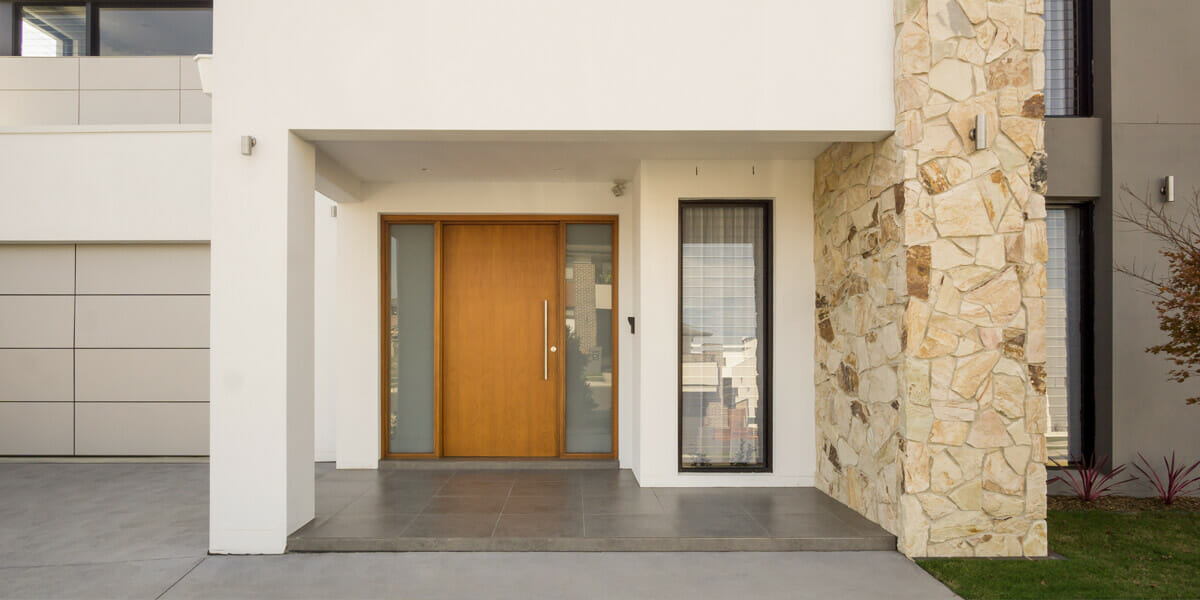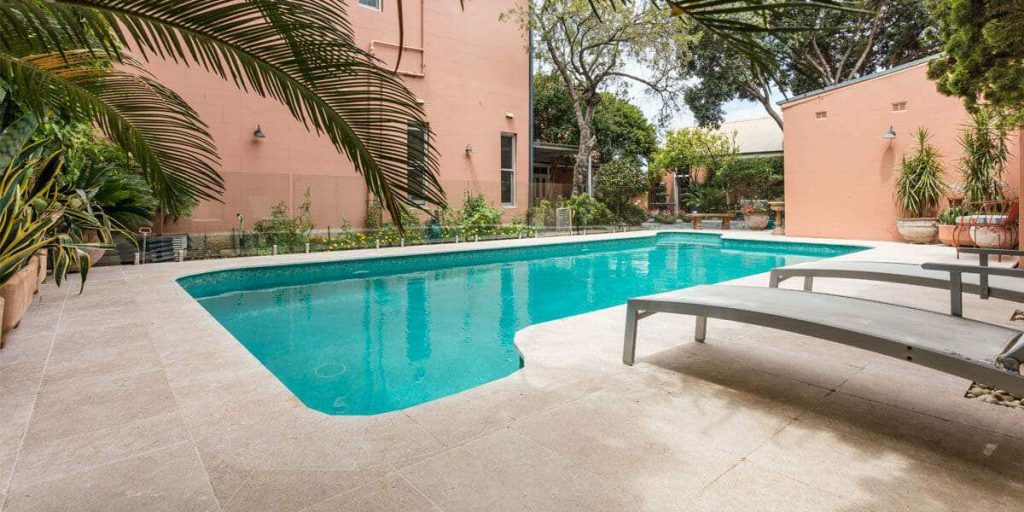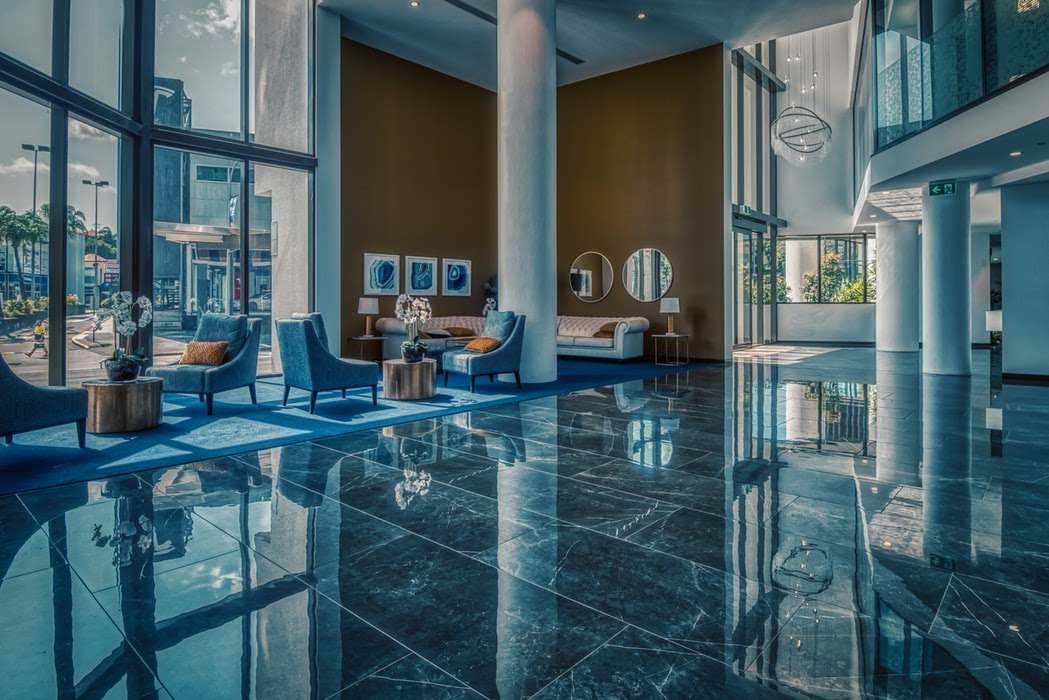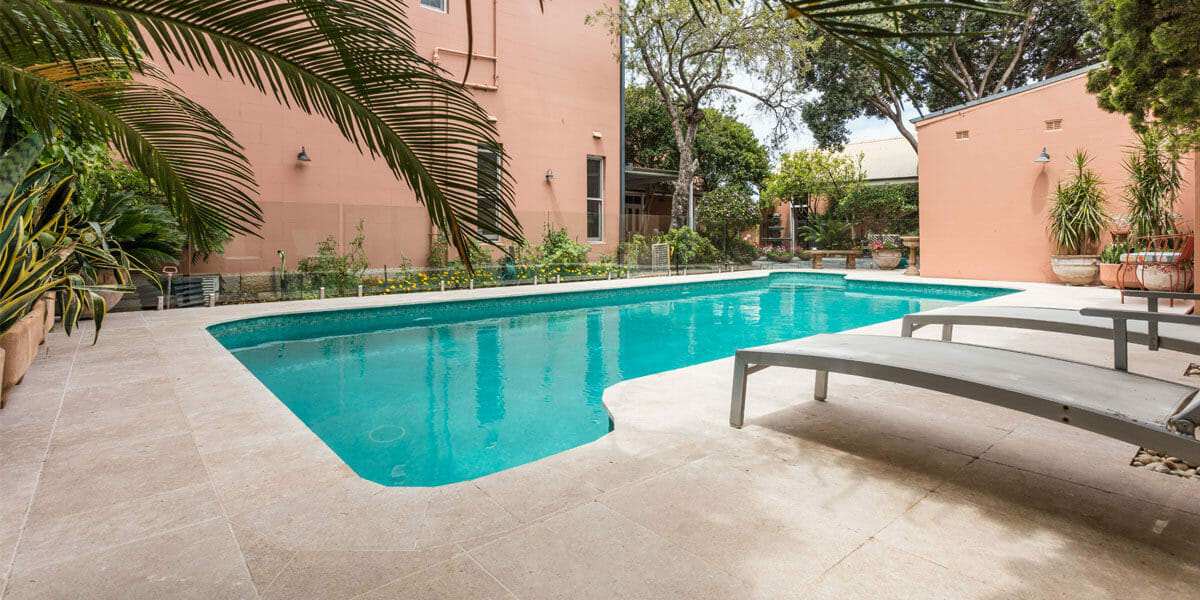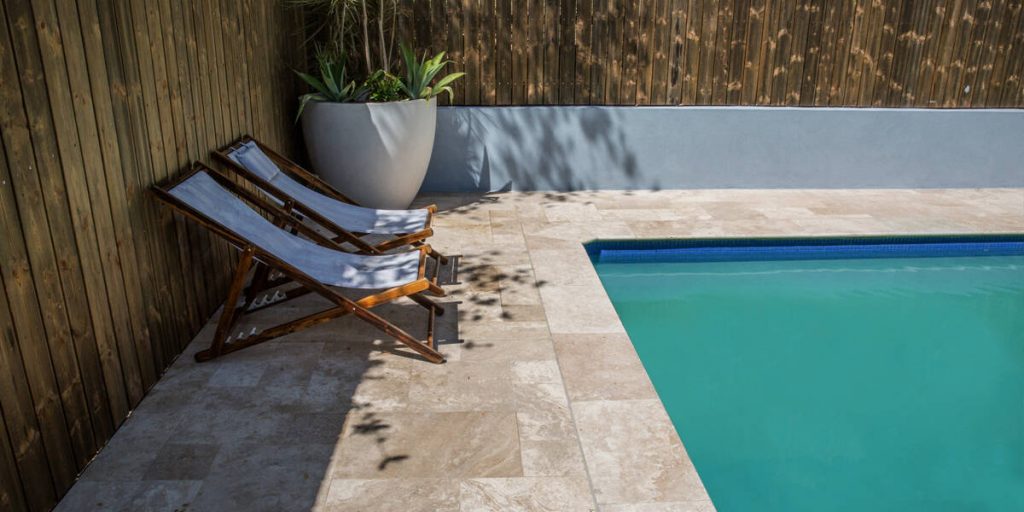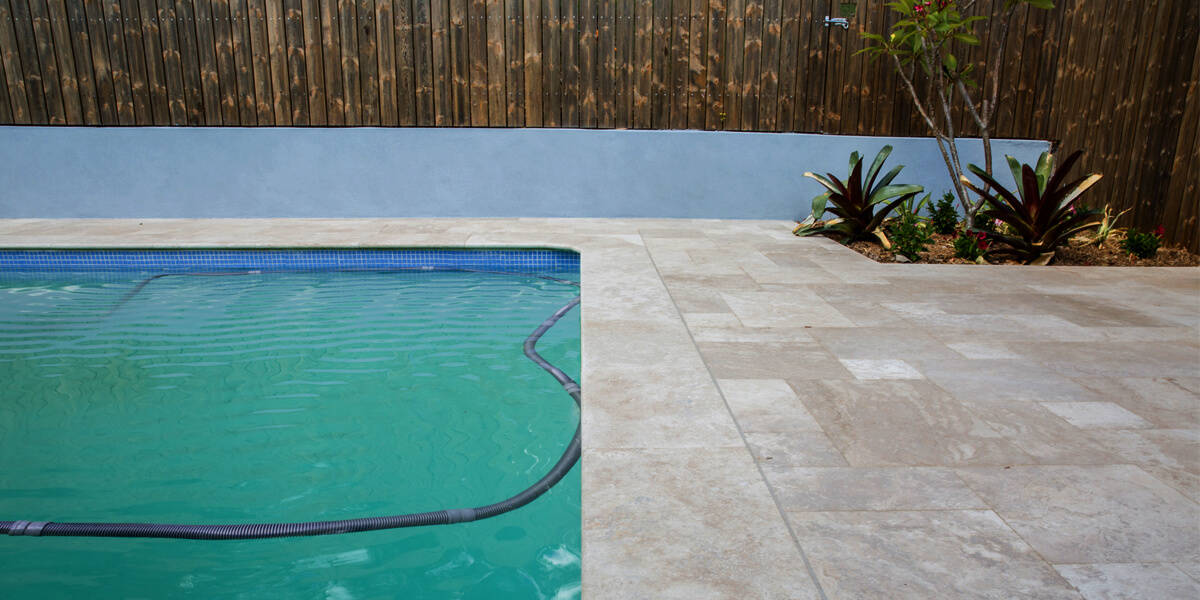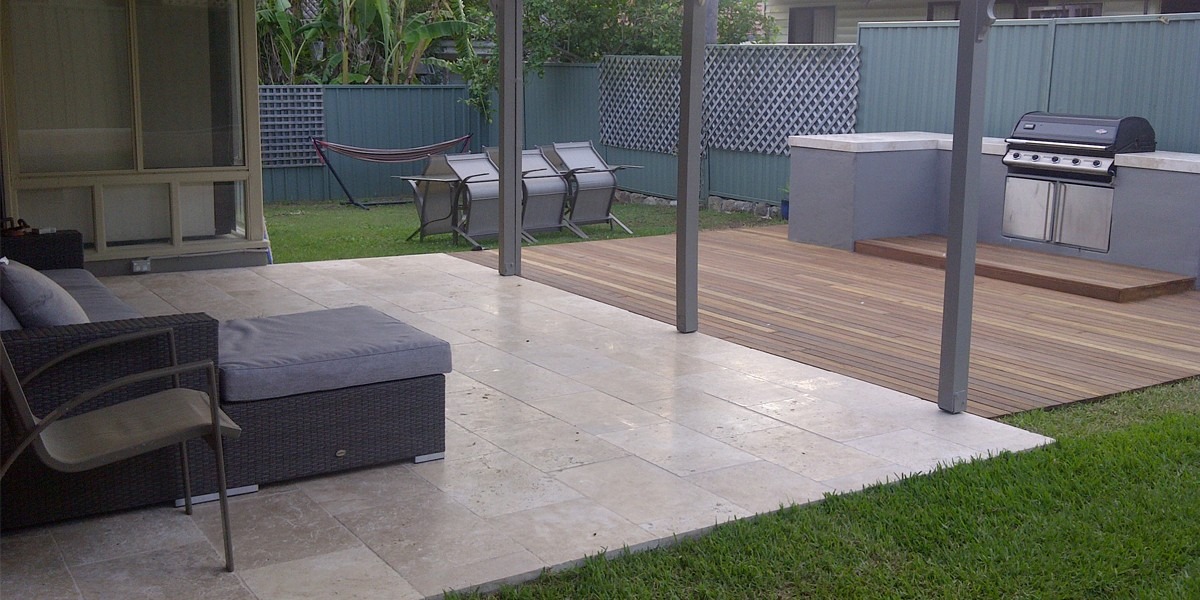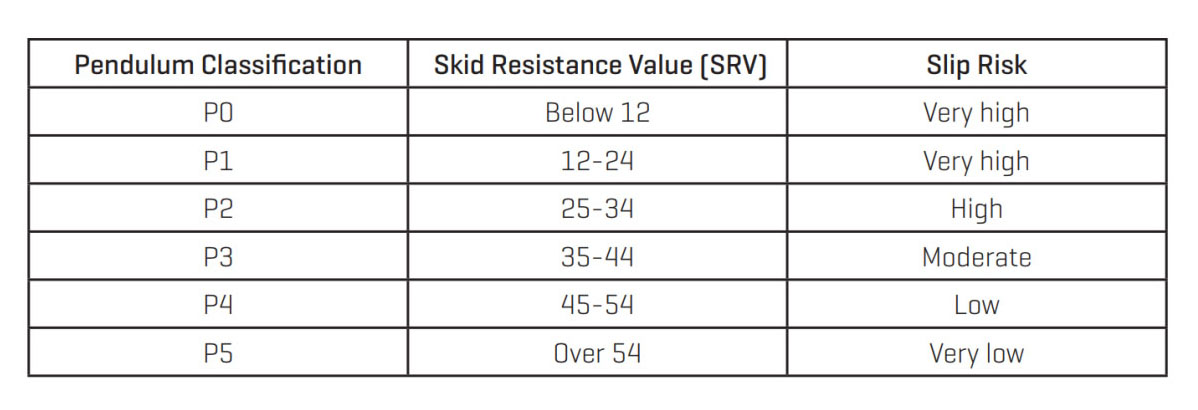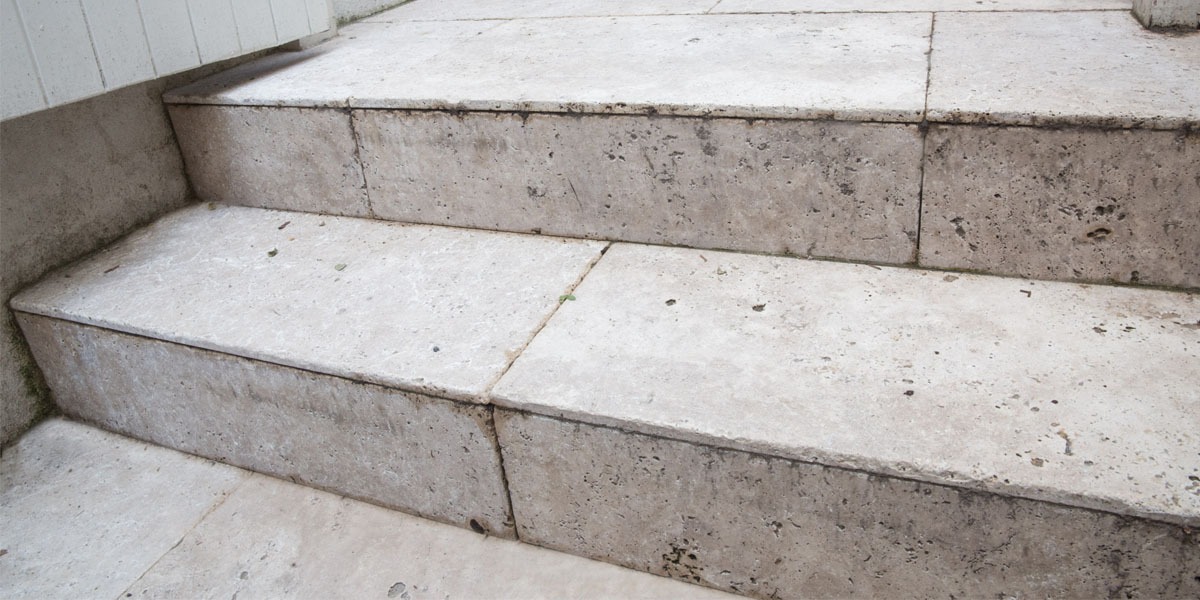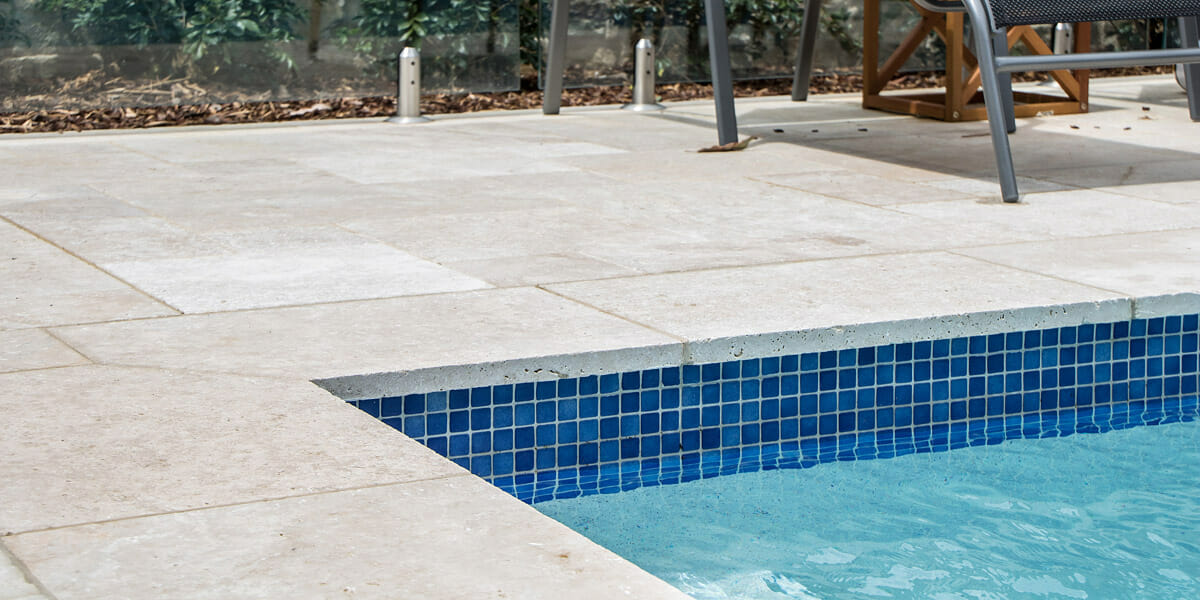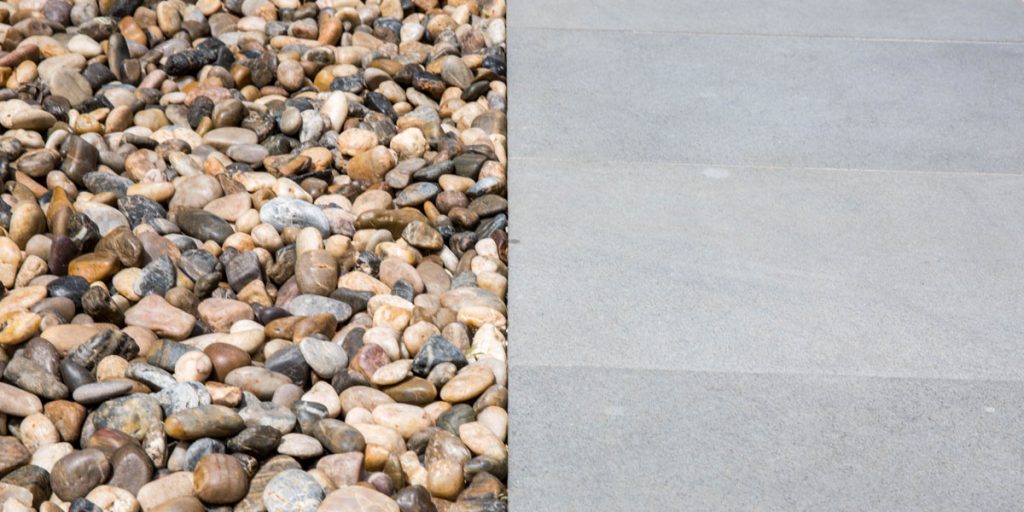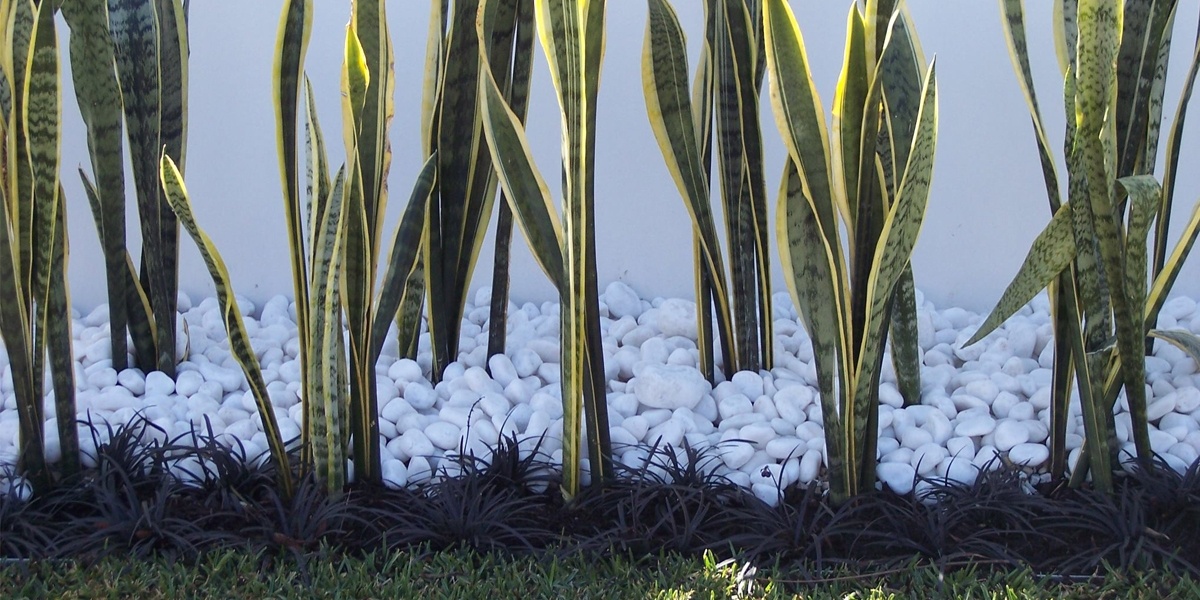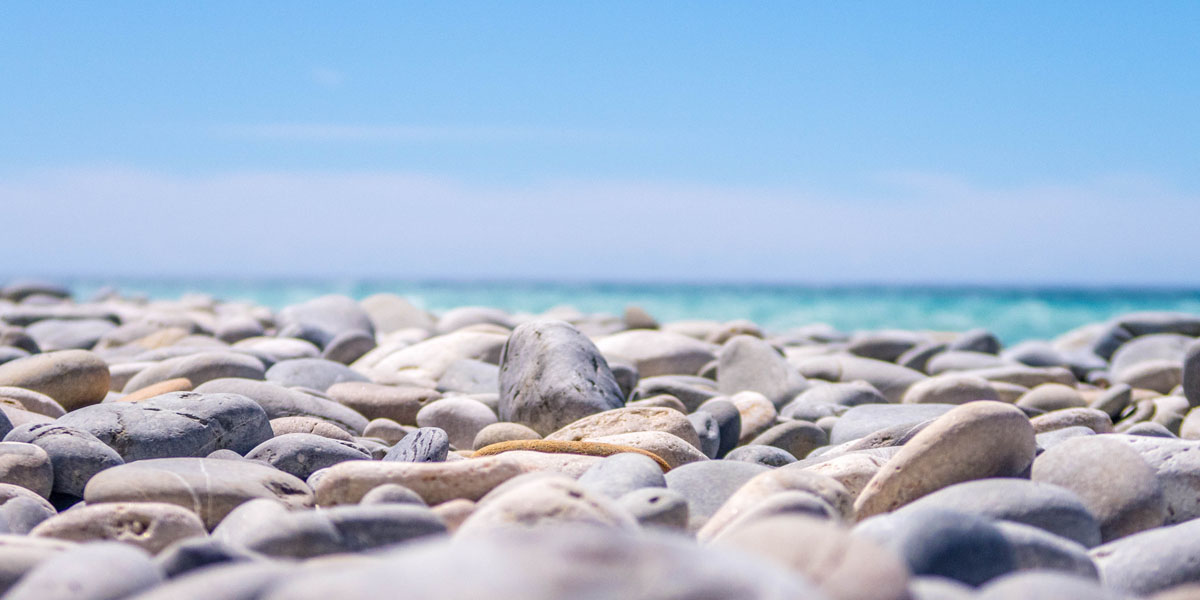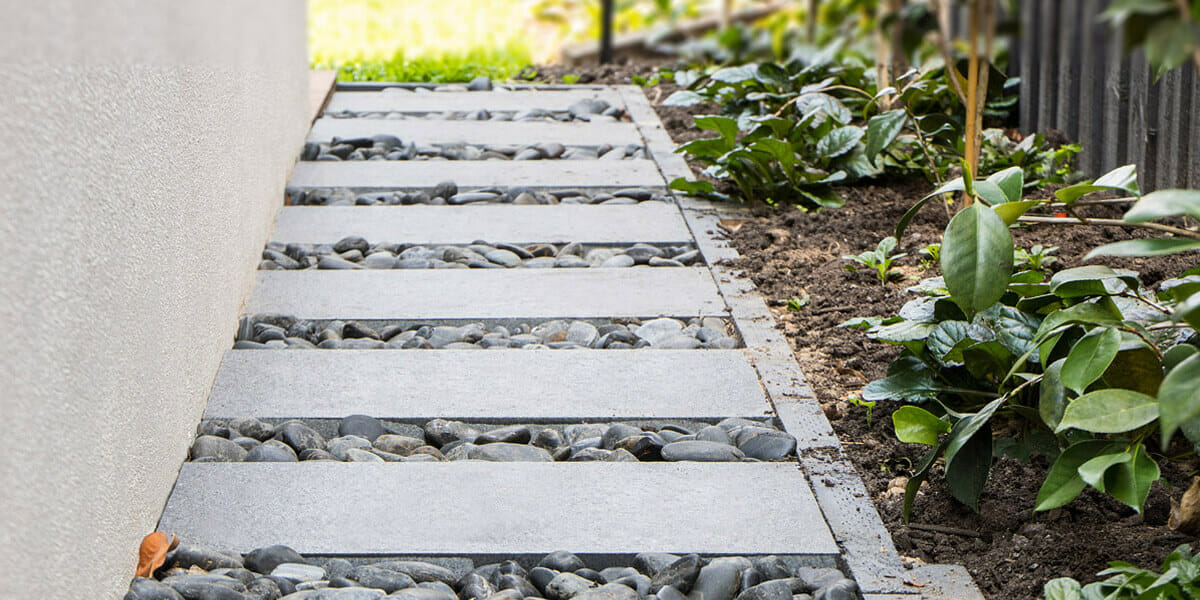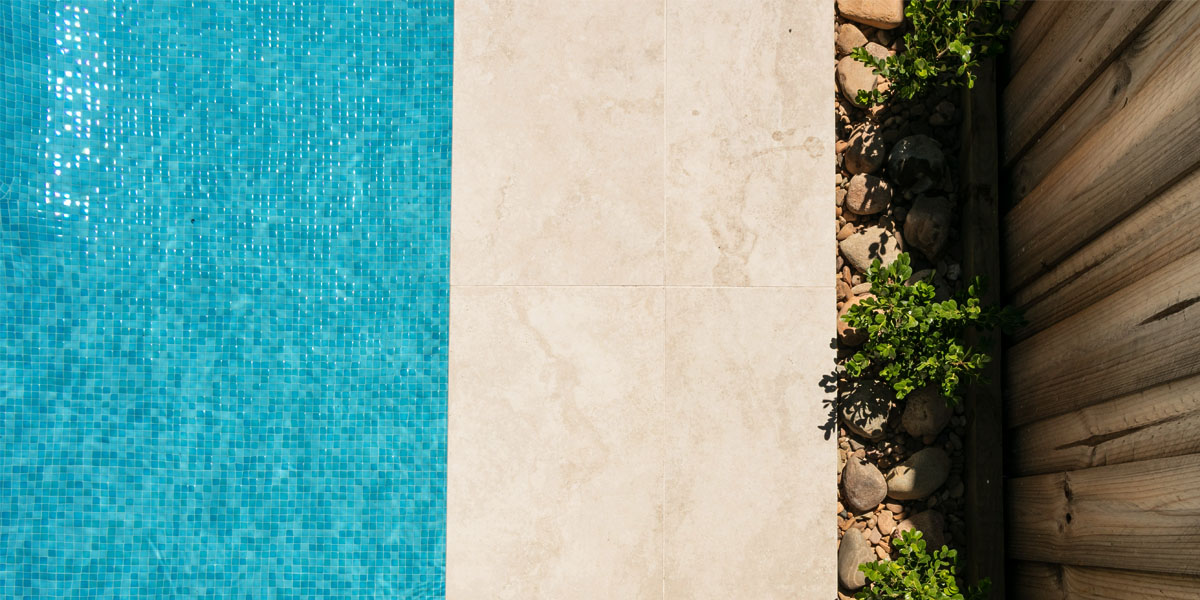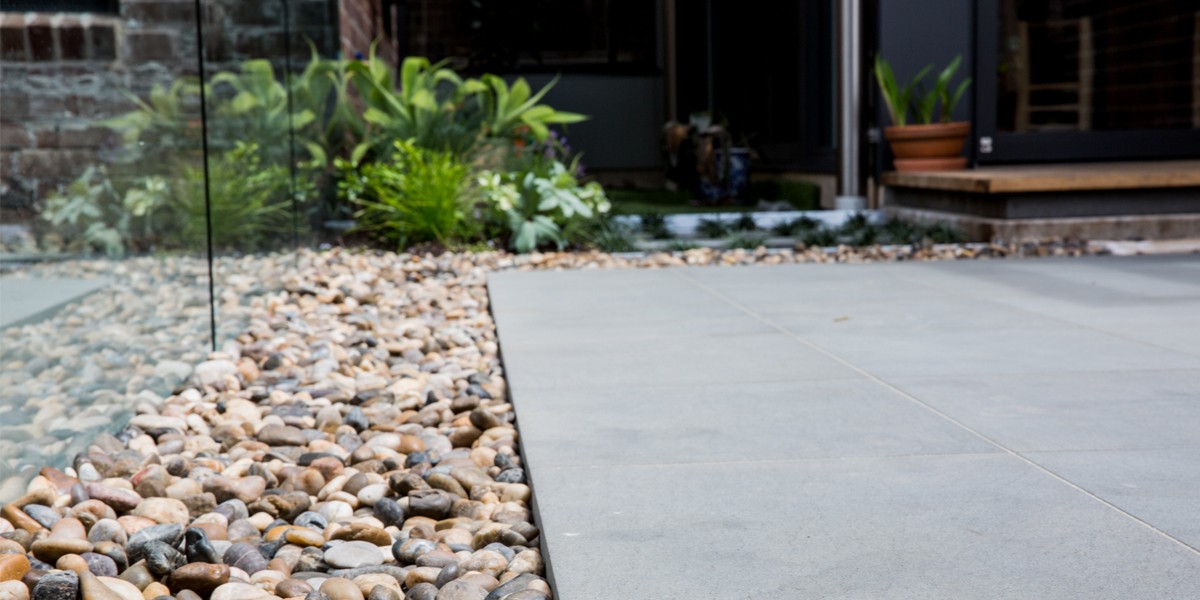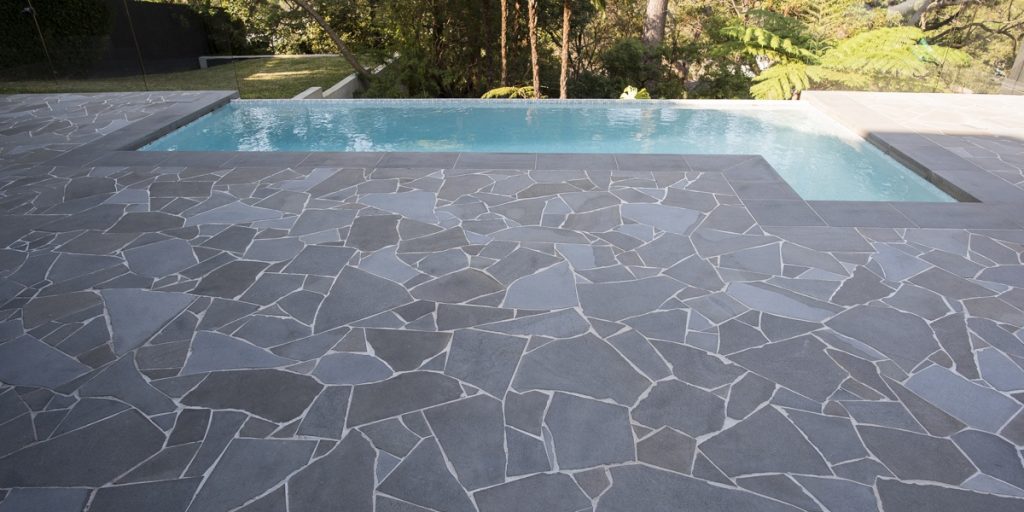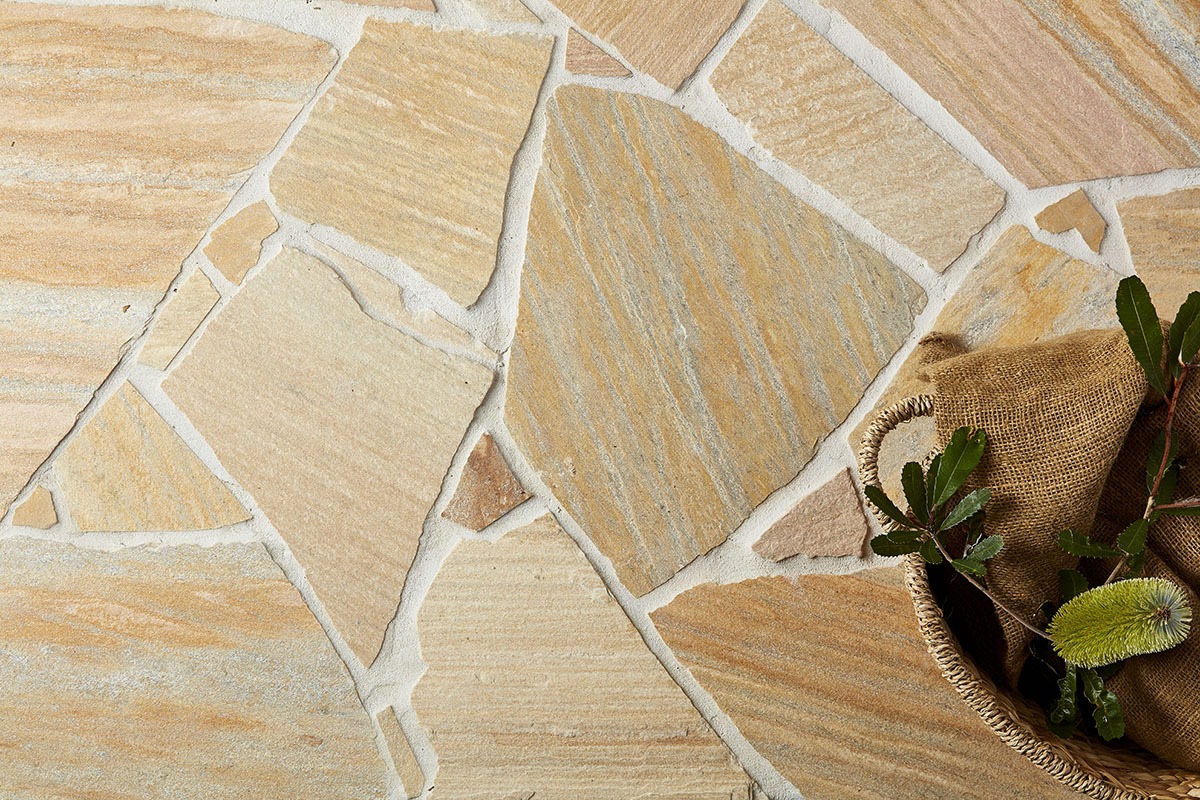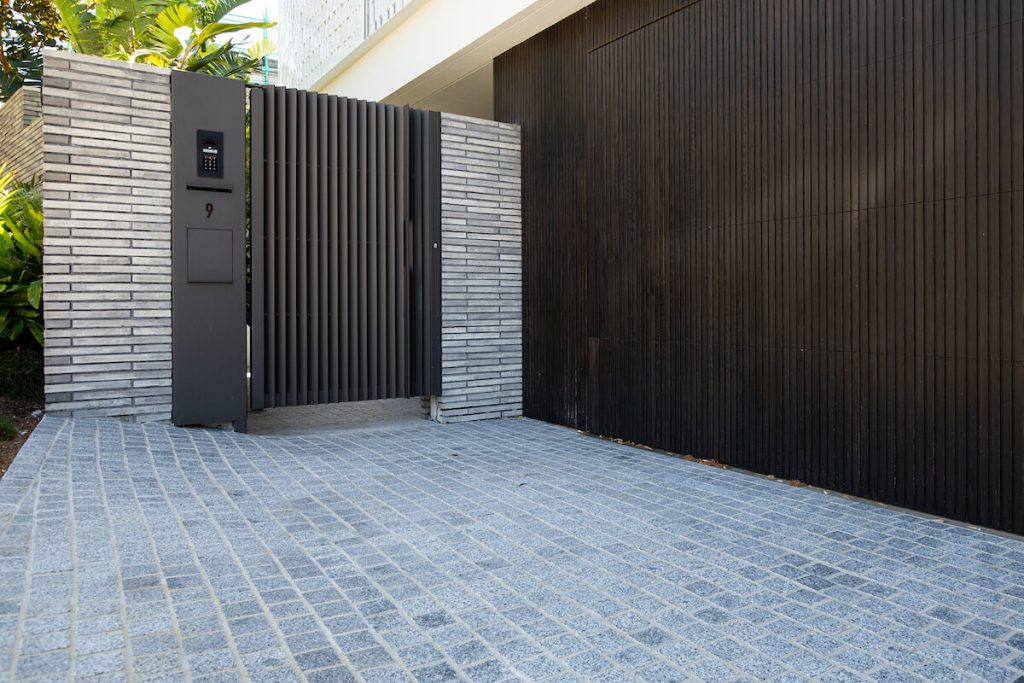
Cobblestone pavers have a way of taking you back in time, to old European cities where horses and carts ventured through windy, narrow, and uneven roads.
Maybe you’ve even strolled through these European laneways, lined with cafes and restaurants in France or Zurich, or stumbled across the cobbles while shopping in Italy, or even enjoyed exploring old castles with cobbled courtyards.
Whether you have travelled to Europe and explored these cobblestone streets, or you’ve only seen them in movies, you’d agree that cobble stones add a beautiful, magical, and romantic touch wherever they’re installed.
But why cobblestone pavers?
Well, cobblestones earned their popularity in Europe because they were easy to find, economical to source and simple to install. These rounded stones, collected from riverbeds, had many helpful qualities for roads. As they formed from years of erosion through fast-racing rivers, they were excellent for traction and reducing muck and mud on roads.
Fast forward a few hundred years, and you’ll see that cobblestone pavers are installed in many modern and contemporary homes. In fact, they’re an extremely popular choice amongst builders, landscapers, architects, and homeowners, and with due reason too!
Firstly – as evidenced with the cobble streets in Europe – they are strong and durable stones that can stand the test of time. Neither political turmoil, nor environmental changes, nor heavy traffic can ruin them.
Secondly, their versatile nature makes them an ideal natural paver for driveways, patios, pathways, and many other places.
Thirdly, they are ideal for installation in more challenging areas like curved or gradient surfaces, where installing larger and rectangular natural stone pavers is a difficult and cumbersome task.
Now, in today’s article we explore why cobblestone flooring is the ideal solution for driveways and landscaping in contemporary and modern homes, the types of cobblestones you can choose and where they’re best suited, as well as the product specifications to consider for the installation purposes of mesh cobblestones.
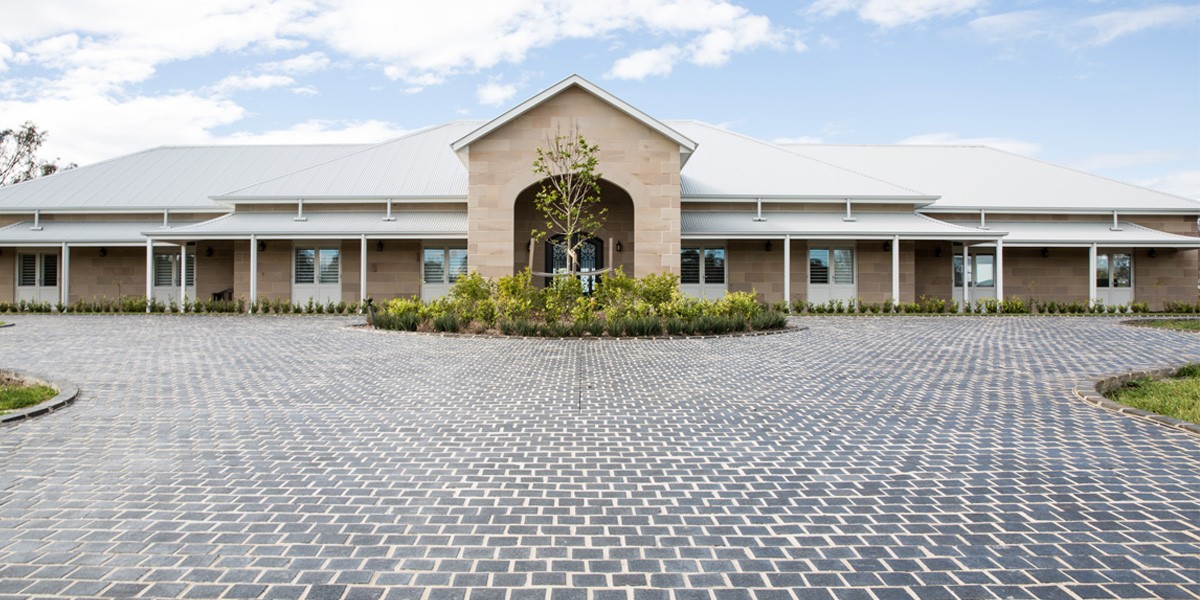 Raven Granite Cobblestones create a grand and practical entrance to this house.
Raven Granite Cobblestones create a grand and practical entrance to this house.
Best Uses For Cobblestones
As mentioned above, cobblestones are strong, versatile, and extremely durable. This makes them an ideal solution for high traffic areas that are more susceptible to wear and tear, like driveways and pathways. In saying this, you might also consider adding cobblestone flooring – with their old-world appeal – to your patio or general outdoor landscaping around your home.
If you’re wondering what paver is best suited for driveways, we strongly recommend cobblestones for driveways for a few reasons. While compared to other natural stone pavers, cobbles are much smaller stones – roughly 100x100mm and 30-60mm in thickness – they are slip-resistant and can hold a lot of weight. So, if your garage holds several cars and people are using your driveway several times a day, cobblestone pavers will support the traffic load without bearing much damage. In fact, if you invest in granite cobblestones, porphyry cobblestones or bluestone cobblestones, the stones will even help mask tyre marks and assist with traction – especially if your driveway is on a slope.
Secondly, since cobblestone pavers are small and available in different patterns – like brick, herringbone, and stagger-set – they are a much more versatile material to work with. As such, choosing cobblestones for driveways means you don’t have to fuss around with large pavers that can be awkward to install on gradient slopes and curved areas – both of which are quite prominent in driveways. In this sense, cobbles are much easier to install in difficult areas. Additionally, Armstone cobblestone pavers are made overseas to resemble the original European cobblestones as closely as possible. This means they’re available in modern colours such as grey, dark-navy and blue-greys which means you can easily match them to the design of your modern/contemporary driveway and home.
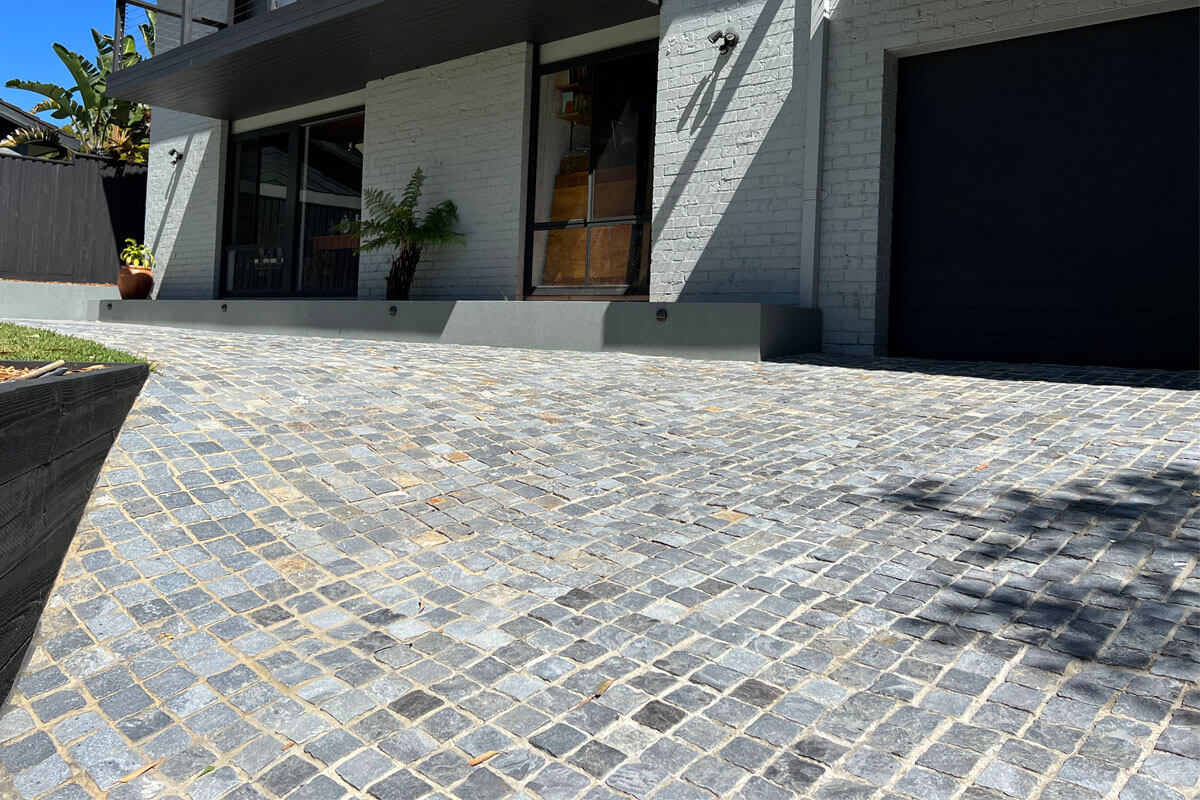
**Audrey Cobblestones on mesh are perfect for busy driveways.
Cobblestones are also a wonderful choice for outdoor landscaping, gardening, and flooring like pathways, bordering around trees and flower beds, patios, as well as edging around a fountain and other water features.
Whether you have a modern or more traditional outdoor design and aesthetic, we stock cobble stones that will suit either exterior. The darker, mysterious and cooler tones of granite, porphyry, regetta, and bluestone cobblestone pavers are ideal for modern decors, while quartz and travertine cobblestones, with their creams and off-white tones, add warmth to a more traditional outdoor aesthetic.
If you want to create a unique pathway that resembles an old English cottage vibe or the paving of ancient Roman streets, install cobblestone pavers in a rectangular pattern. You can choose from a herringbone, filetti or brick-bond design. For a flat and consistent surface, we recommend a herringbone pattern as it’s easier to walk on. This is ideal for homes with kids, pets and elderly members who might otherwise trip at the uneven surface created by installing irregularly shaped brick or narrow cobble pieces to achieve the filetti or brick bond looks. And if you’re looking to add a unique touch to your landscaping and maybe define certain focal points, cobblestones make exquisite borders around larger pavers.
Regardless of which cobblestone paver design you choose, you’re guaranteed to create a timeless landscape, along with a durable and slip-resistant flooring solution that will last generations to come.
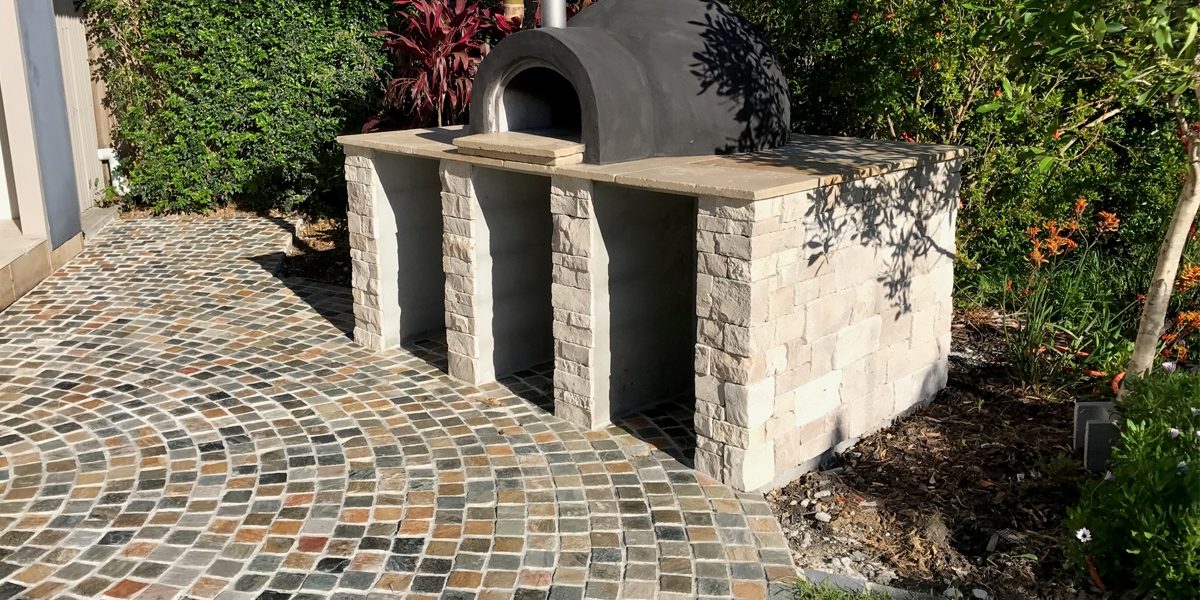 Bonza Quartz Cobblestones create a beautiful circular artwork in this outdoor patio.
Bonza Quartz Cobblestones create a beautiful circular artwork in this outdoor patio.
Types of Cobblestones
Now that you’re more familiar with the history of cobblestones and their best uses, let’s look at the types of cobble stone flooring available and the best uses for each variety.
Basically, cobblestones are available in three types of finishes: split-face, tumble/rumbled, and flamed/exfoliated.
So how to choose which finish is the best one for your project?
Well, this truly depends on the type of aesthetic you’re trying to achieve. For example, if you want a natural, uneven, and old-European laneway cobblestone look, split-face is ideal because the cobbles have been split from a much larger stone and have a rough look, as though you’ve just found them at the riverbank.
Alternatively, if you’re looking for a smoother, uniform, and consistent finish, the tumbled/rumbled look is ideal. Tumbled cobbles have been processed by joining smaller stones together. Though they still look like cobblestones, they have softer edges and are a good option for pathways.
Finally, if you want a textured, natural, slip and moisture-resistant surface, then the exfoliated/flamed finish is the best choice for you. Here the cobblestones have been heated with a high intensity flame making the stone’s surface rough and faded. This means the cobbles have better grip and have a more natural aesthetic.
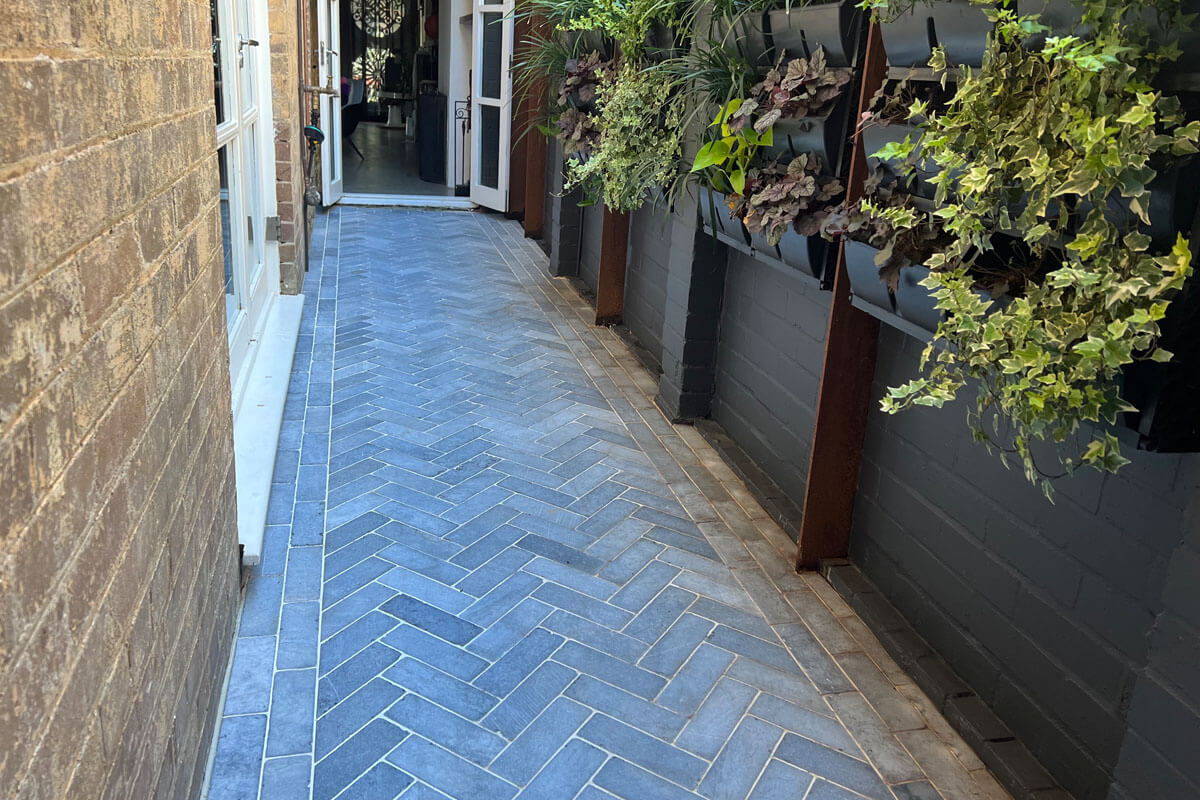
Regetta Cobblestones add a stylish touch to your home.
Once you’ve decided which finish best suits your project, it’s time to choose from the following three installation options that we stock at Armstone:
- Mesh cobblestones (see adhesion method at the end of this article)
- Cuboid cobblestones
- Split-loose cobblestones
Much like choosing the type of cobblestone depends on the general use and aesthetic for your cobblestone driveway or landscape project, choosing the best installation method factors in your budget and the type of finish you desire.
So let’s look into them in a bit more detail.
Like the name suggests – instead of using them individually – we glue cobblestone pavers on mesh. The mesh backing offers an easier and more efficient installation process. So instead of fussing around and going through the time-consuming task of installing the cobblestones one piece at a time, you can achieve the natural cobble stone aesthetic at half the cost of installation.
Additionally, since these cobble stone pavers are made from off cuts of different stones, if you’re looking to create an outdoor floor with an un-uniformed style that closely resembles cobblestone flooring found in older European cities, mesh cobblestones are the ideal solution. Their variety of colours and shades adds character and texture to any space.
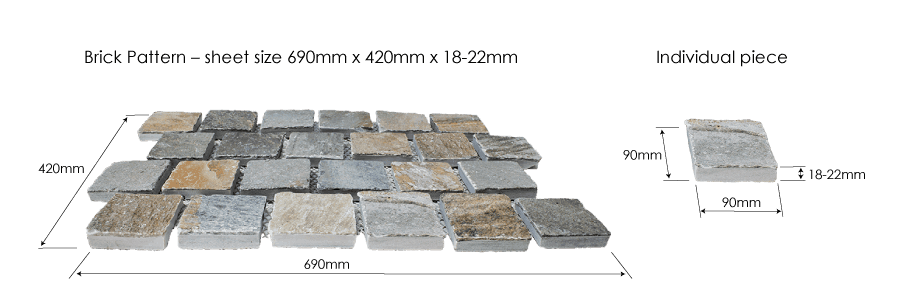
On the other hand, if you prefer a more uniform shape, size, and colour for your cobblestone flooring, we recommend Granite Cobblestone pavers. These pavers are available on mesh backing in either a flamed or exfoliated finish. The granite has a high non-slip rating of P5, achieved by using high heat to fracture and spall the mineral inclusions. This makes the cobblestones flat and consistent, ideal for pathways and driveways with high traffic. If you’re looking for a consistent finish, Raven Granite Cobblestones and Gris Granite Cobblestones are ideal choices.
If you’re set on installing cobblestone pavers on mesh, learn more about how to do this yourself by reading our article here.
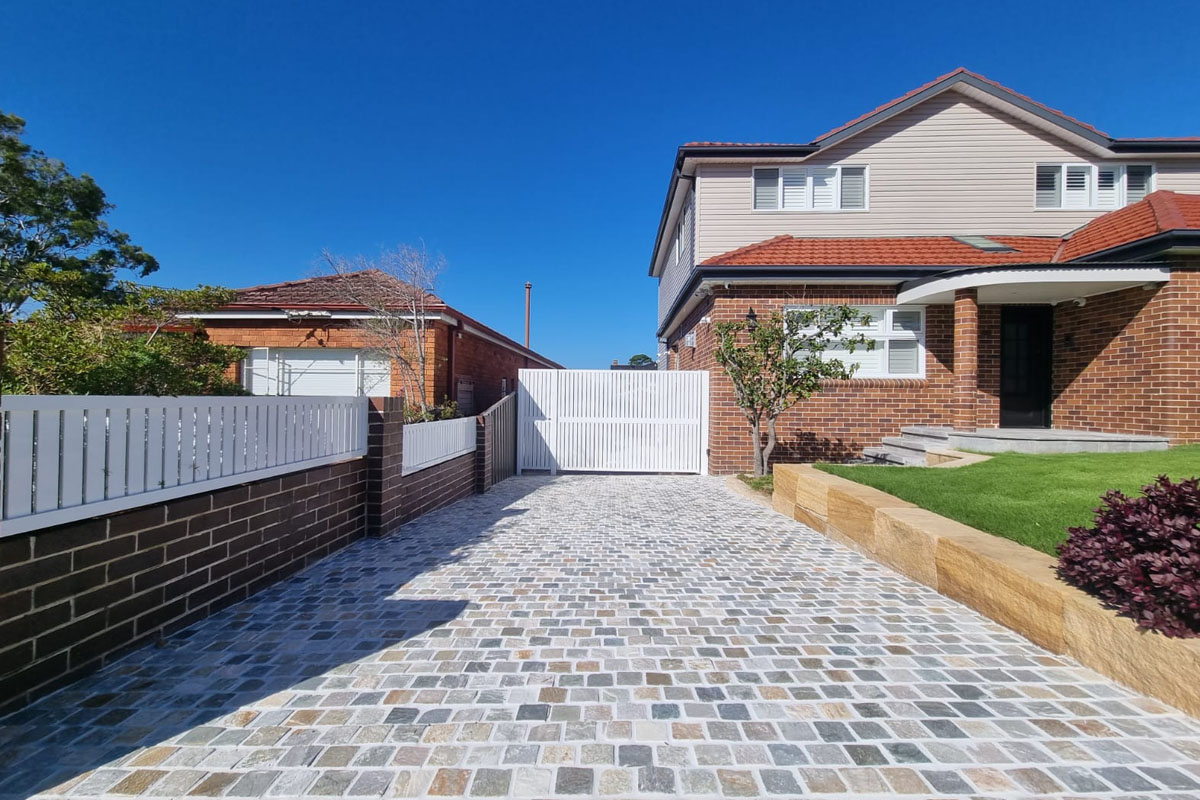
Cuboid cobblestones are comprised of loose pieces of bluestone, limestone, marble, and travertine cobblestones. We call them ‘invariable’ because of their invariable and constant sizing. They typically have rumbled edges and a non-slip texture. Invariable cobblestones are ideal for areas where you prefer to have uniform flooring such as high traffic pathways that will be accessed by children and the elderly.
Split-Loose Cobblestones are the last option available at Armstone. These individual stones are split all around, giving the cobbles a traditionally vintage and natural cobblestone look. We recommend installing these cobblestones for exteriors with a more vintage aesthetic. As they provide excellent grip for tyres, split-loose cobblestones are especially ideal for steep driveways.
Being loose individual stones, split-loose cobblestones allow more versatility for installation. For example, you can lay them in either a fan, straight set or brick pattern. Additionally, if you have curved spaces or wish to create a circular design, split-loose cobblestones are the ideal stone paver because they offer you the flexibility to be able to work around otherwise challenging spaces.
Our split cobblestones are generally 100x100mm in length, with a thickness that varies from 30-60mm. Since the stones are split on all 6 sides, it’s very hard to get a consistent thickness throughout. Compared to invariable cobblestones and mesh cobblestones, split-loose cobblestones are also more challenging to install. Thus, it’s best to install them on a mortar bed where you can tap down each individual cobble to make the surface as consistently flat as possible. While the surface will have deviations throughout, it will be reasonably level. If you have any questions regarding the installation process, we recommend reaching out to an experienced professional who understands how to install them so that they are adhered correctly. This way they will provide a solid and durable floor that will stand the test of time.
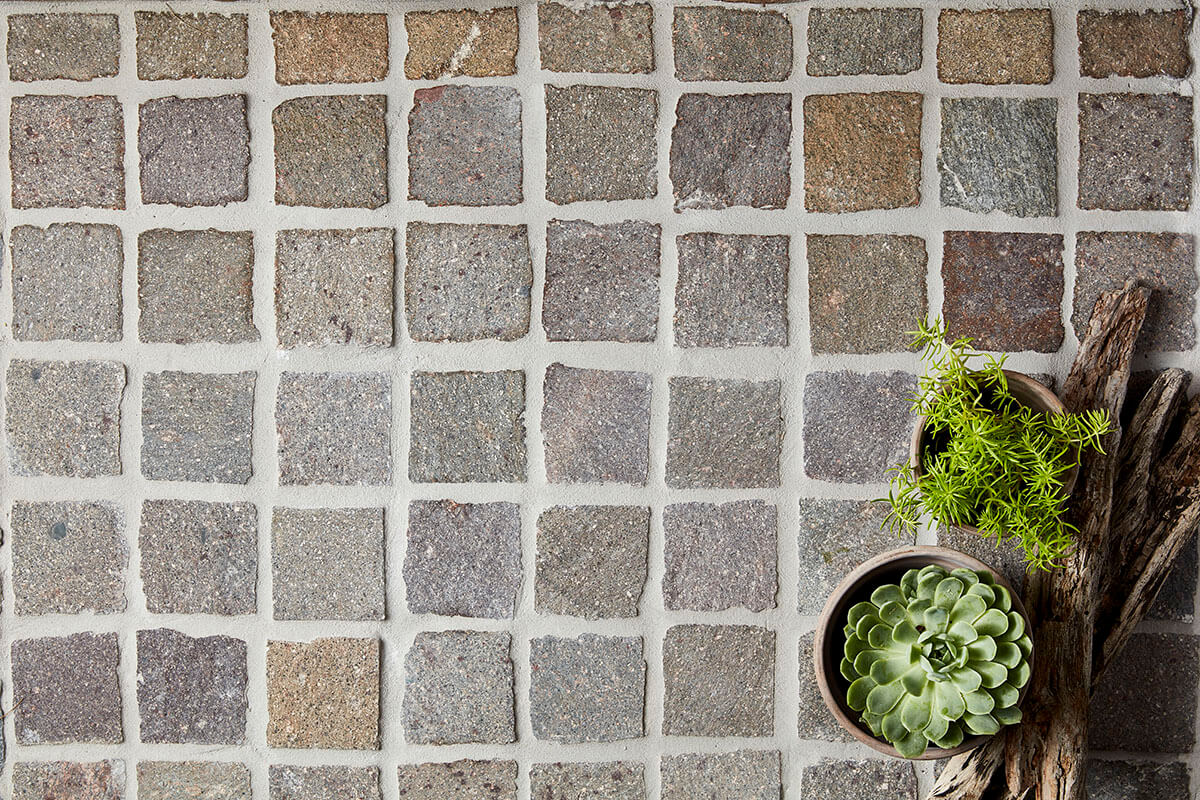
Adhesion Method for Cobblestones Pavers on Mesh
As we have mentioned above, installing cobblestone pavers on mesh is both faster and more economical than installing other cobblestone pavers like invariable or split-loose cobbles.
Mesh cobblestones can be adhered directly onto the chosen surface using the appropriate adhesive such as the Ardex X18 with an Ardex E90 latex additive.
Prior to adhering to the mesh cobblestones, you need to create the mix and then fix them into place.
- Mixing
Creating a two-part adhesive requires mixing the adhesive with either an additive or an additive with water. As with most mixes, we recommend carefully reading and following the manufacturer’s instructions. They will advise the best ratios for powder, additive, and water for each product. Follow these closely to create the best mixture.
Pour the advised proportion of additive into a clean mixing container. If you’re adding water, use clean and cool water to the additive and mix until blended. Gradually add the required amount of powder to the additive / diluted additive solution and slowly mix the combination. We recommend using a low-speed mixer to create a smooth and creamy consistency.
Once you’ve achieved the desired mixture, let it stand for 1-2 minutes. Then re-stir the mixture prior to using it to adhere the mesh cobblestones.
- Fixing
Now that the mixture is ready, it’s time to glue the mesh cobblestones onto your chosen surface. Much like working with any other pavers, first and foremost make sure that your chosen substrate is clean, solid and free of any particles like dust, oil and grease. Make sure your mesh cobblestones are also clean and free from contaminants and dust.
Once everything is clean, follow these steps to install the mesh cobblestones.
- First and foremost, ensure that the substrate has been cured. Curing ensures that the chosen surface (whether it’s a waterproofing membrane, concrete base, or a screed bed) is of the ideal moisture and temperature for installation purposes. Again, follow the manufacturer’s instructions so that you’re laying the mesh cobblestones on the best base.
- Next, work/key in the adhesive into the substrate using a 15mm notch trowel. Then ‘back butter’ the mesh side of the cobblestones, covering the entire surface so that each cobble firmly sticks to the substrate. “Back buttering” is when you spread a thin layer of the adhesive onto a paver prior to adhering it to the desired surface.
- Once well buttered, firmly press the cobblestone sheet onto the freshly notched adhesive. The base of each individual cobblestone needs to be covered by the adhesive bed. Additionally, the adhesive needs to rise 5-10mm into the joint. Use a rubber mallet to move any cobblestones into their desired positions.
- To achieve consistent joint spacing for the grout, use joint spacers or wedges between the interlocking sheets. Remove these spacers/wedges once the adhesive sets but is not full cured.
- Work in controlled spaces with consideration for adhesive open time (pot life).
- Use a spirit level to ensure the installed mesh cobblestones are the desired flatness/consistency.
- Ensure that there are no voids beneath the cobblestones by lifting a random sheet from time to time to check.
- Finally, before the adhesive sets, ensure that any surplus mixture is removed from the surface of the cobblestones and joints.
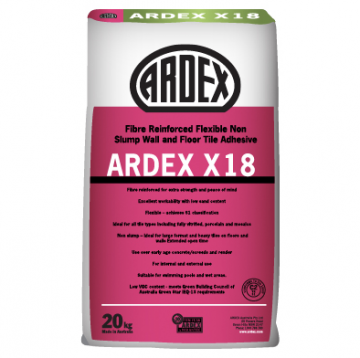
There you have it!
A step-by-step guide on installing mesh cobblestones.
As usual, if you have any questions, we strongly recommend consulting or working with a professional installer.
In summary, whether you’re decorating the borders around your water feature, or looking to install a timeless and rustic pathway that reminds you of your European adventure, or you want a natural stone paver that can endure the heavy load of your busy driveway, cobblestones pavers are strong and versatile, and an excellent choice for any outdoor exterior.
At Armstone we stock a wide range of cobblestone flooring to suit both traditional and modern home aesthetics including Granite Cobblestones, Porphyry Cobblestones like Porfido, Quartz Cobblestones like Lorax, Marble Cobblestones like Lokki and Limestone Cobblestones like Aria.
Hopefully, this article helped you see why cobblestones are an ideal solution for your driveway and landscaping project. If you need any help, feel free to reach out to our natural stone experts online, over the phone at 1300 560 560 or at our Sydney showroom in Glebe.
We love this stuff and would love to help you bring your cobblestone project to life.
Below video will help you understand why is it important that your trusted stone suppler works closely with Installer.
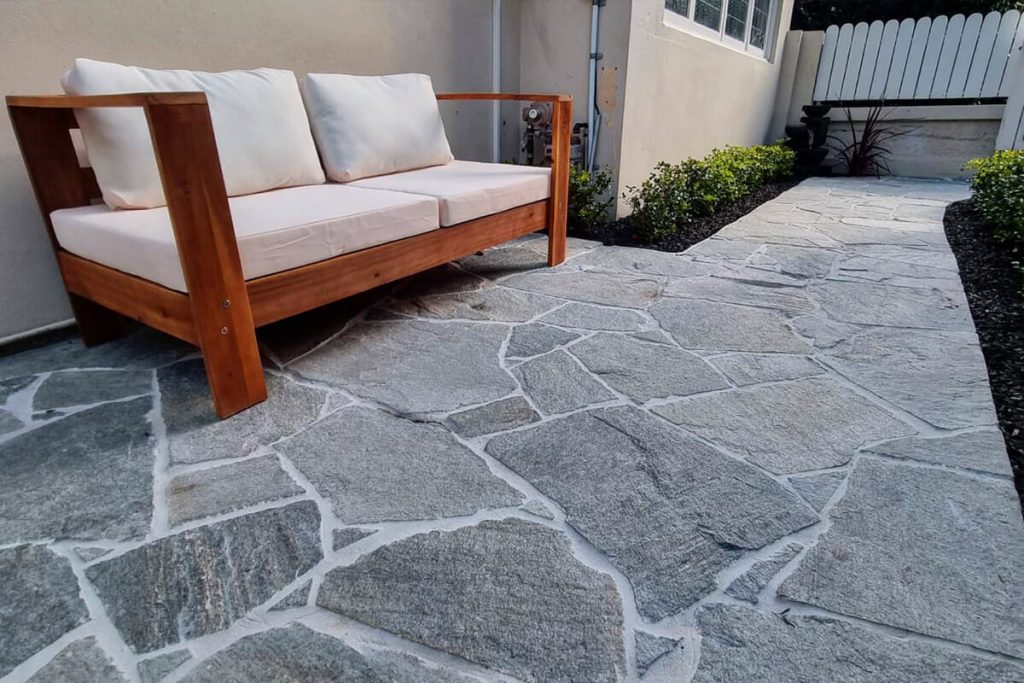
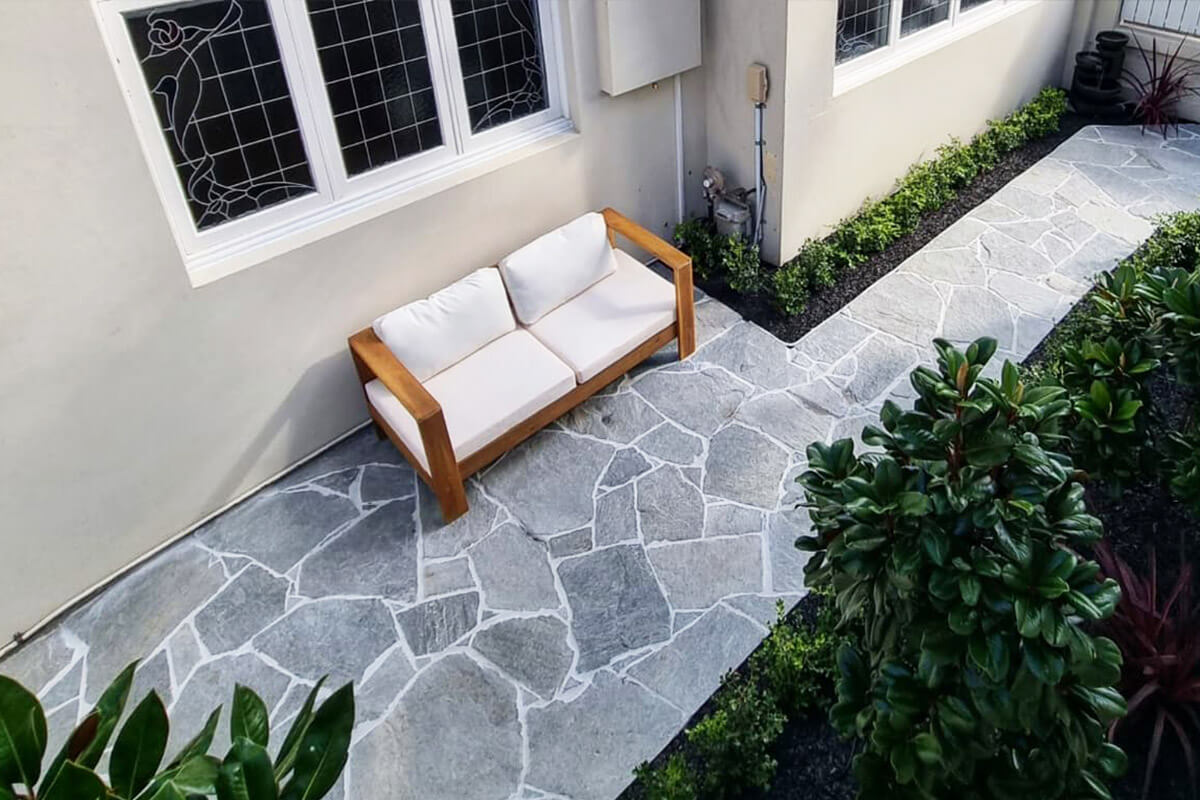
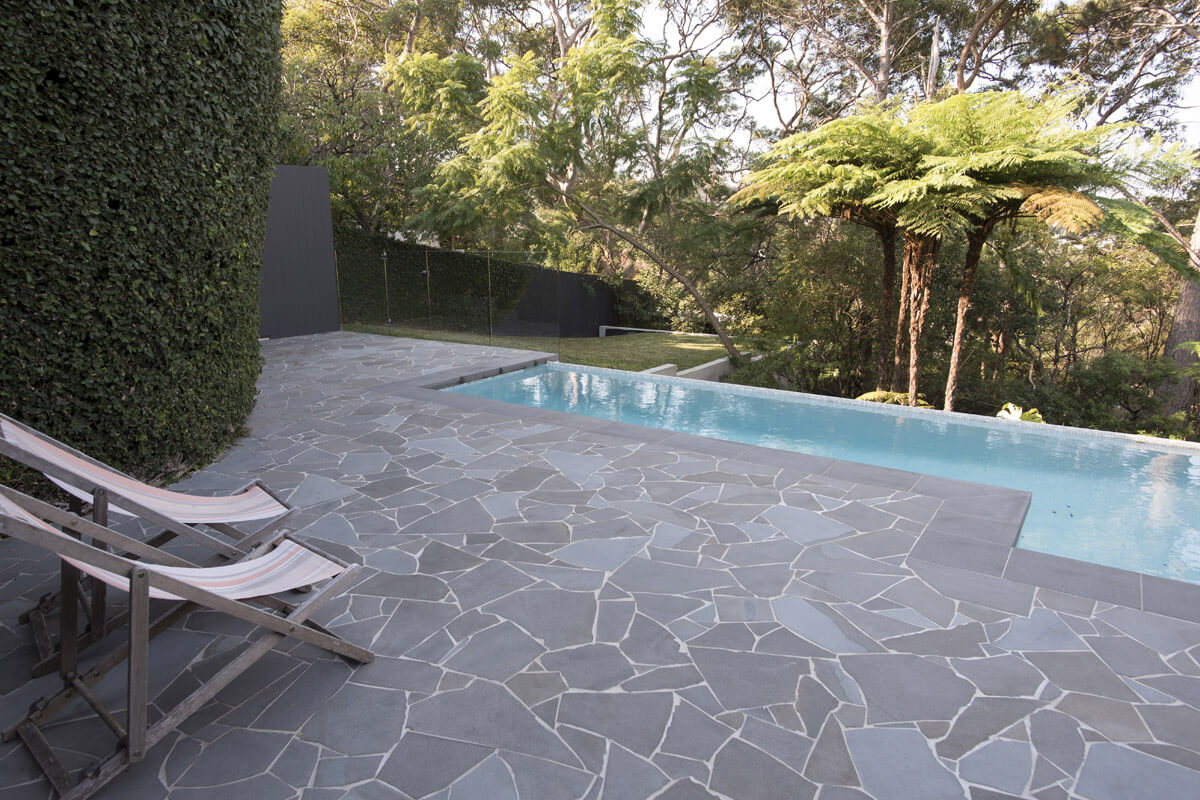
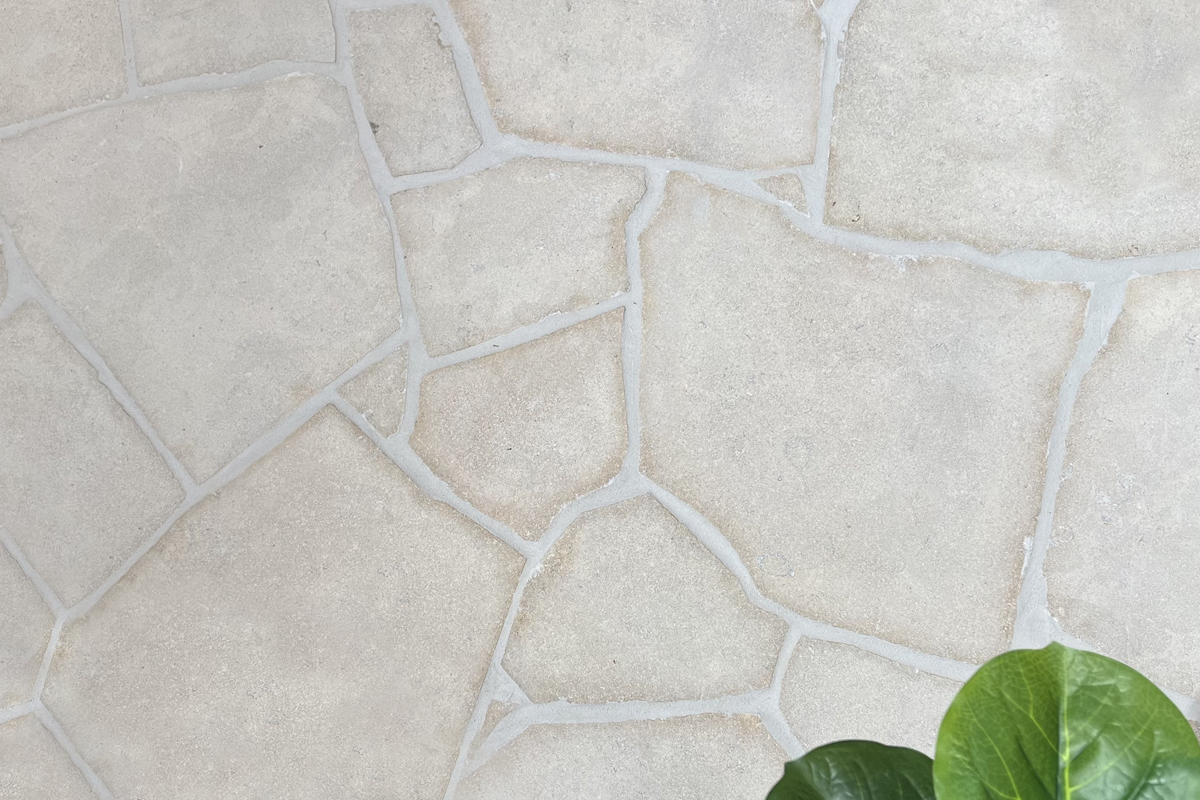
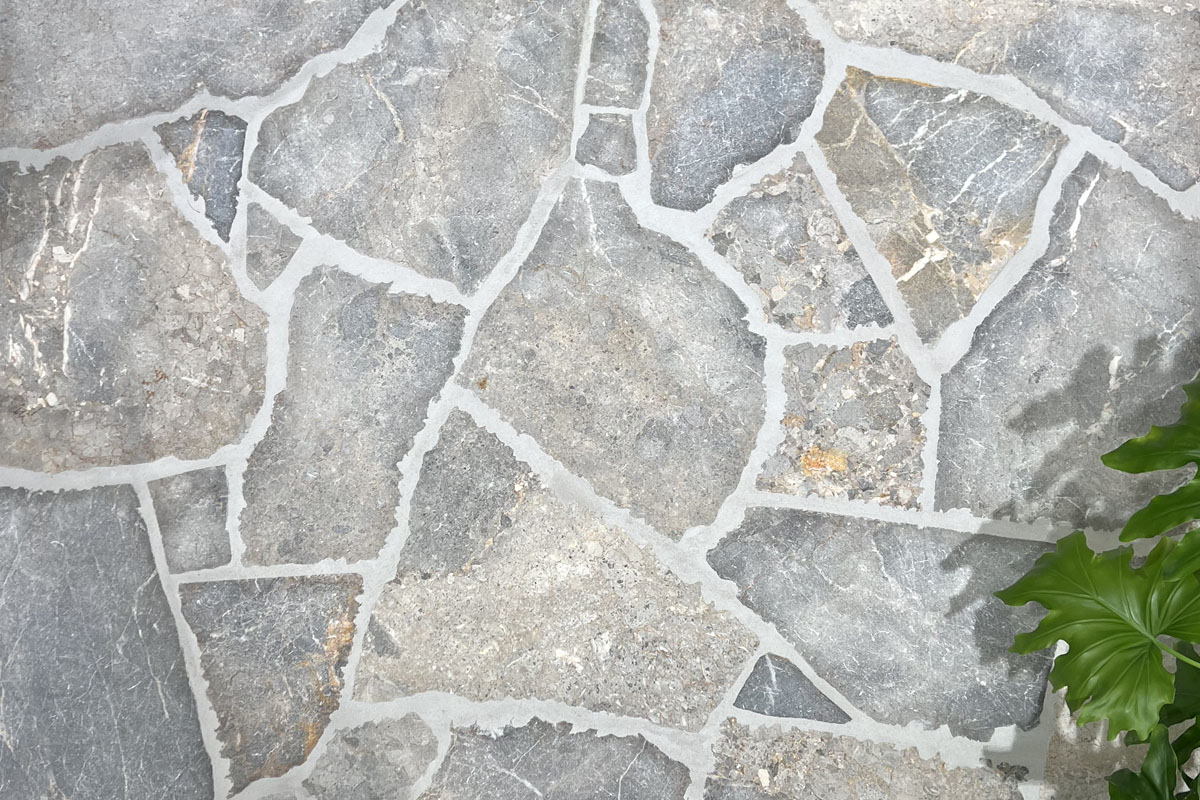
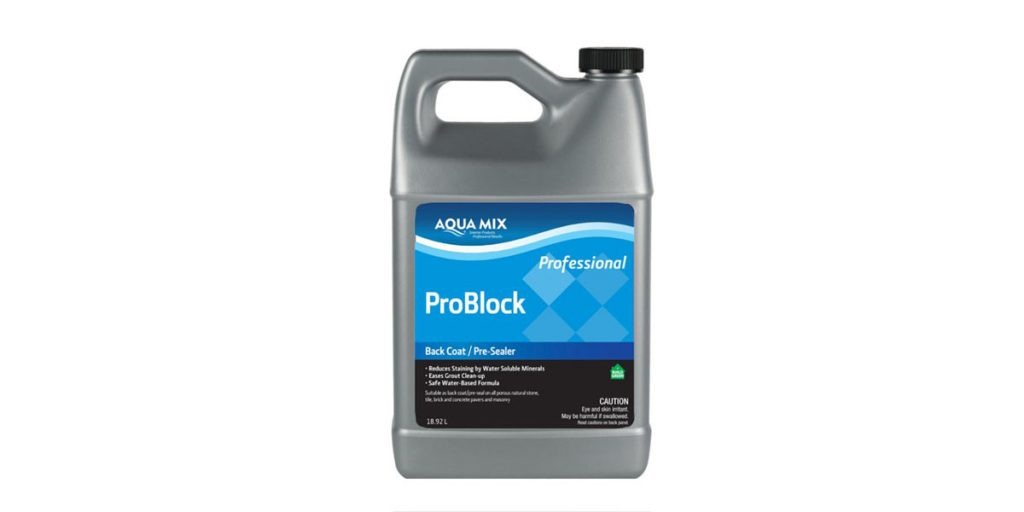
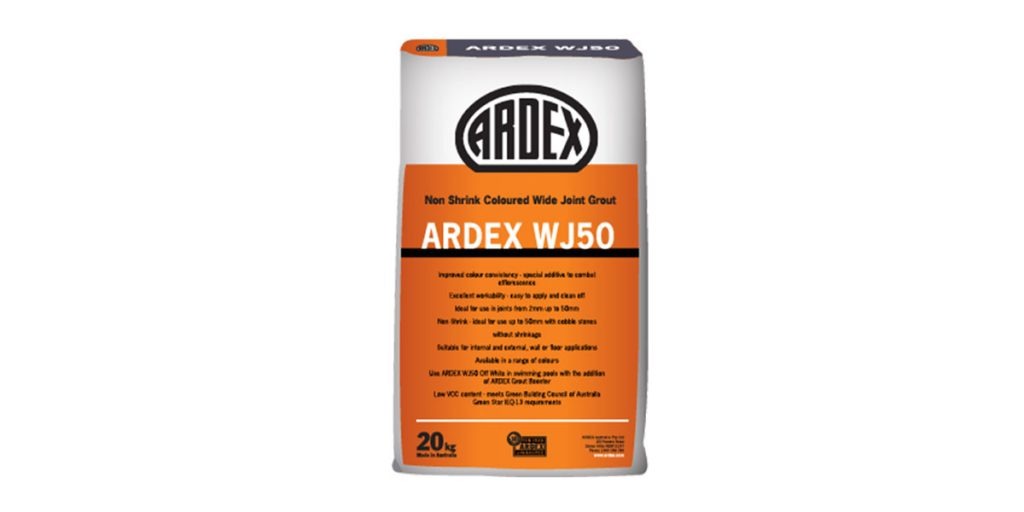
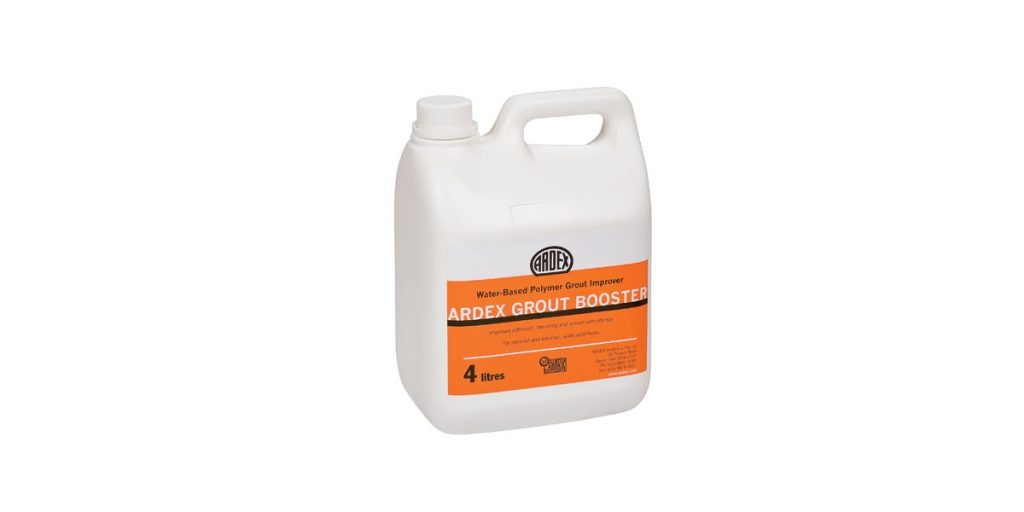
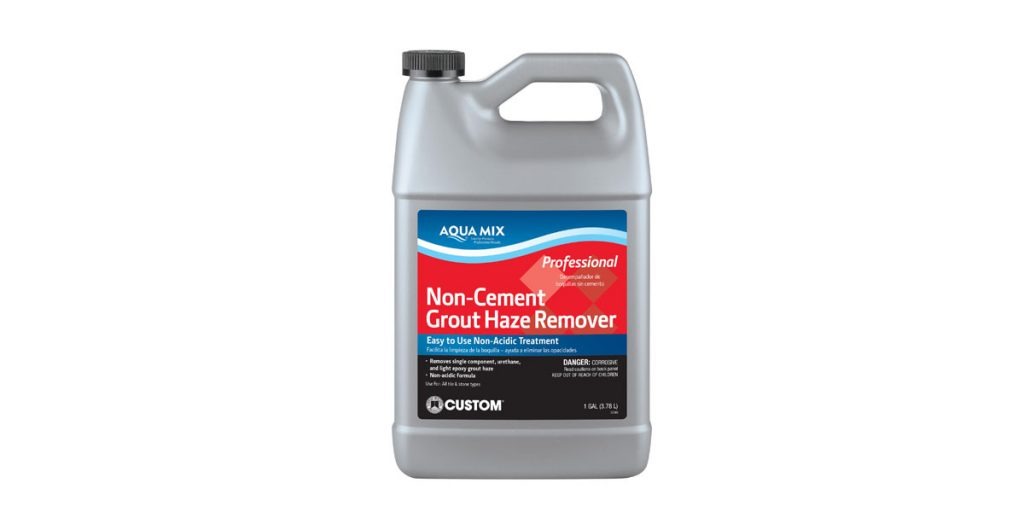
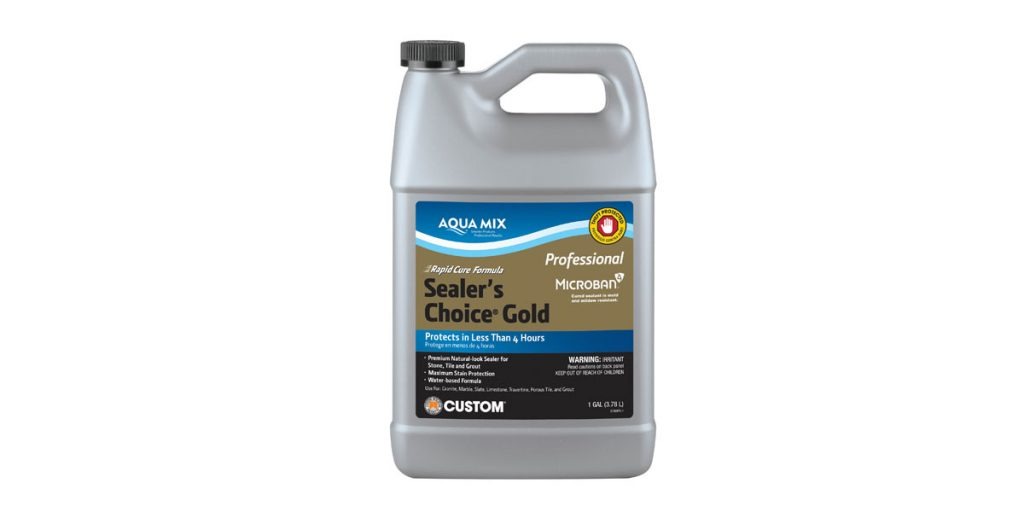
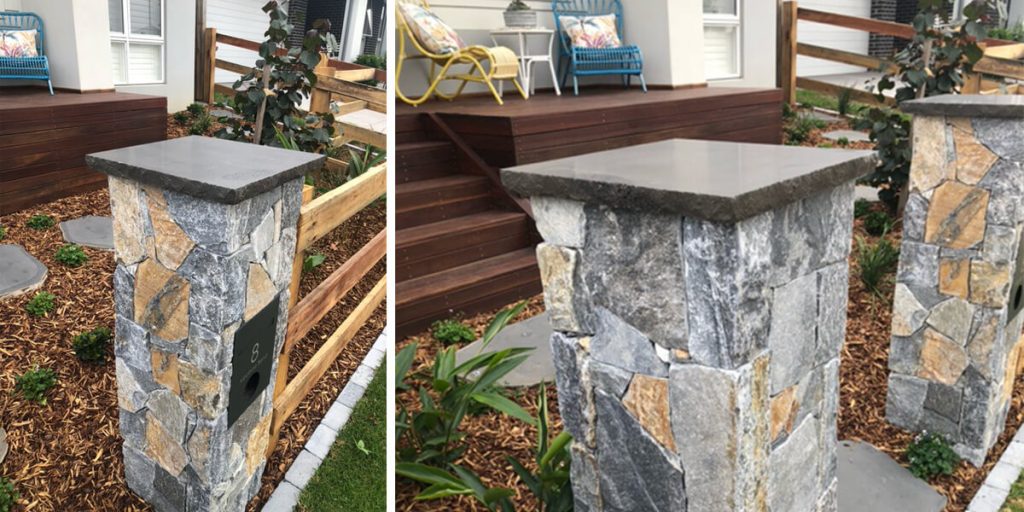
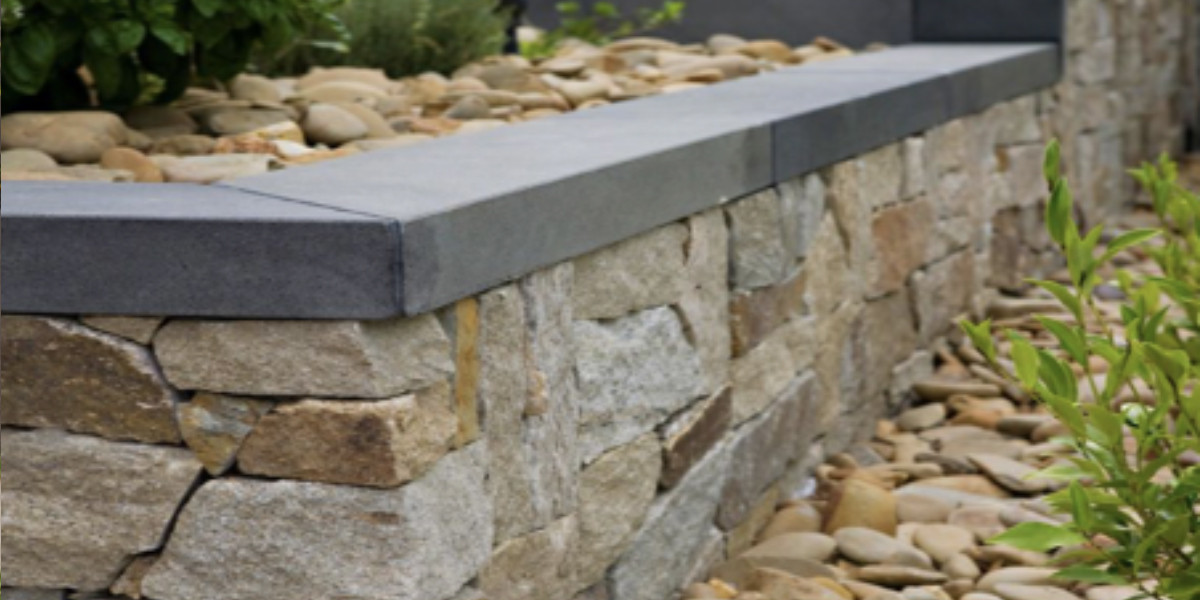
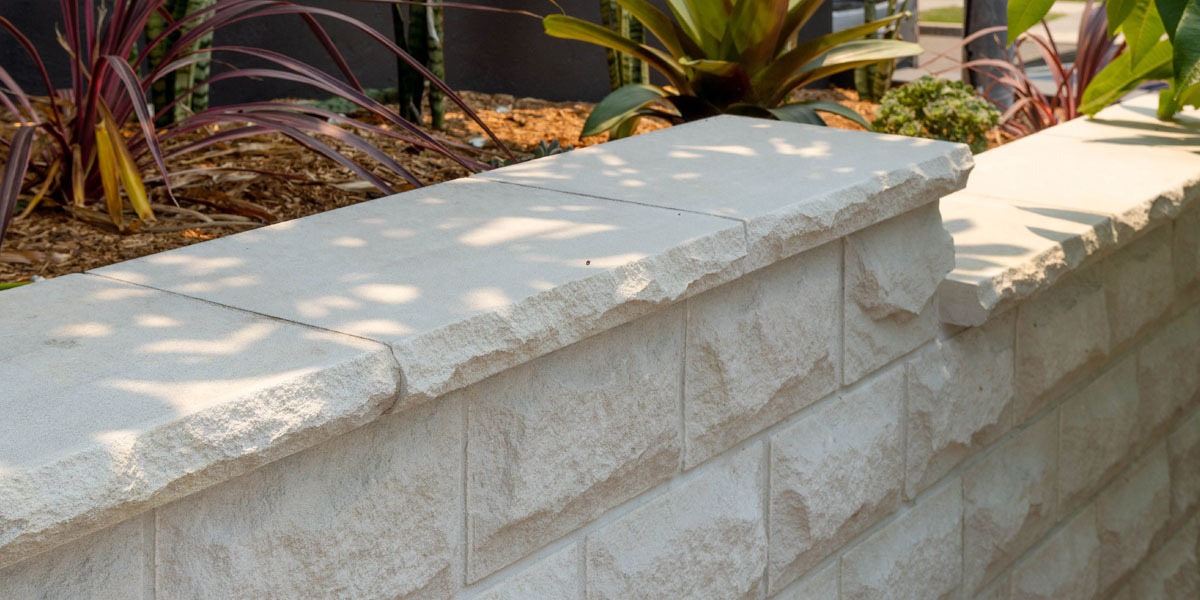
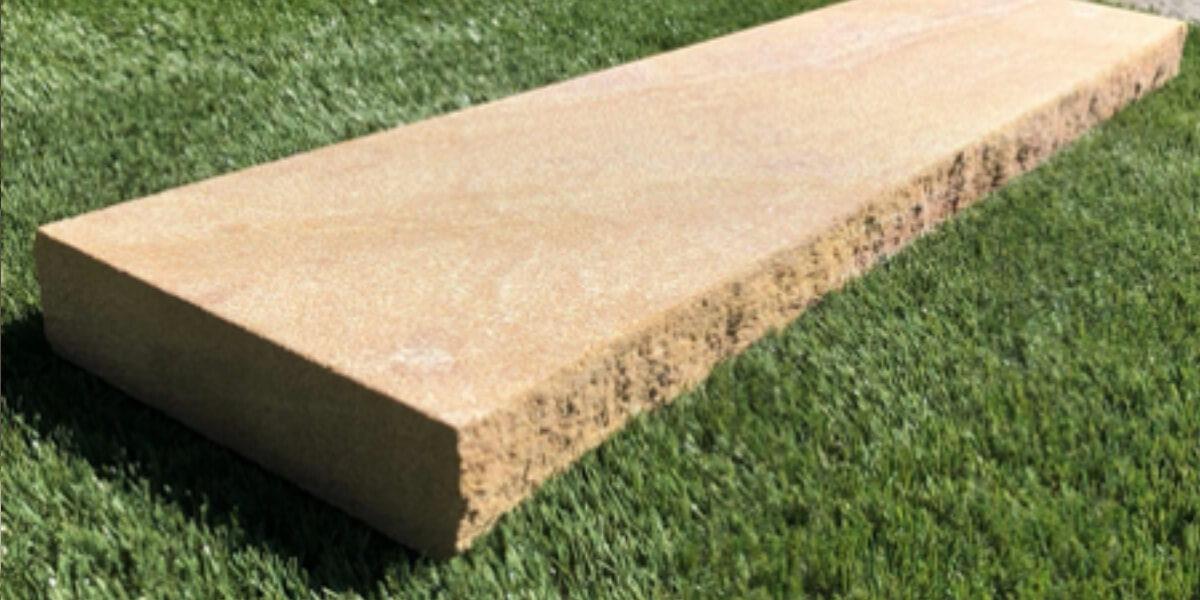
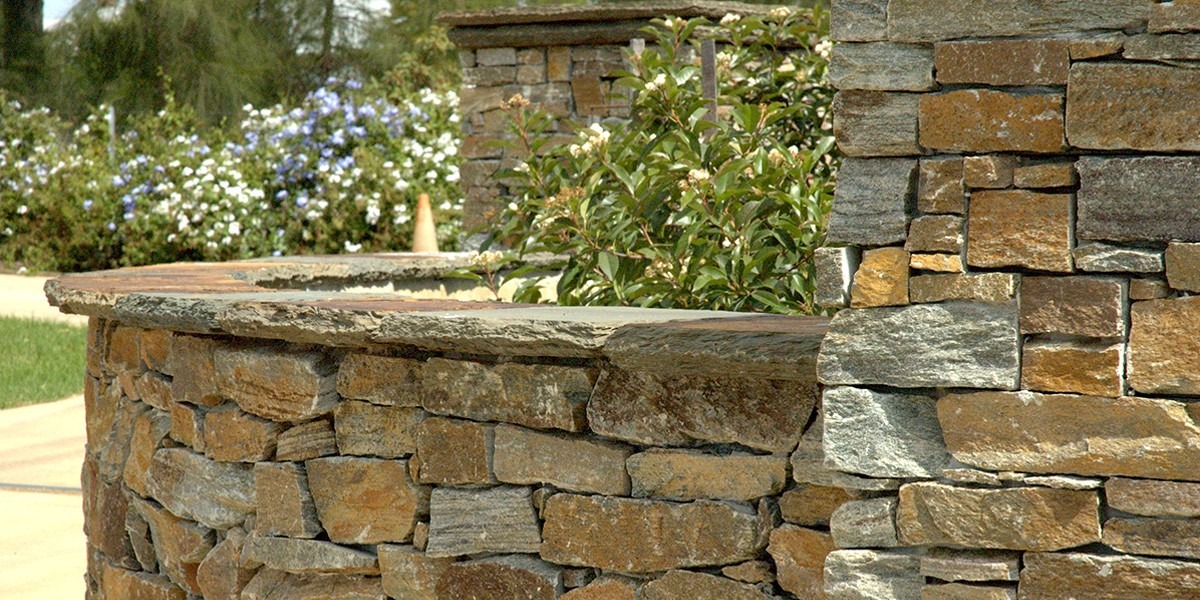
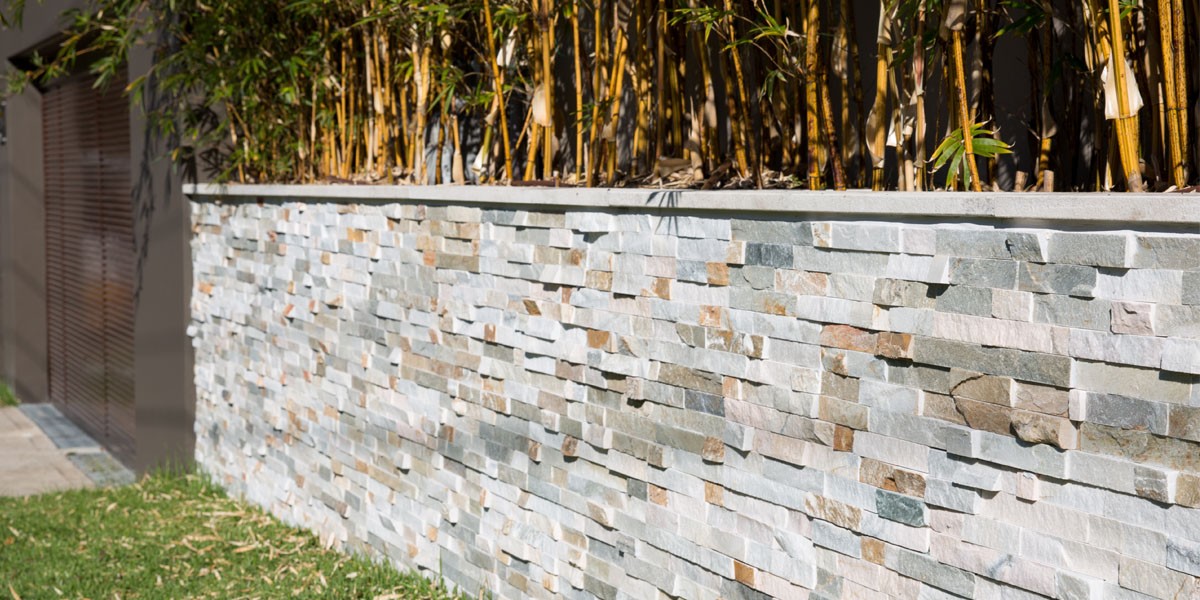
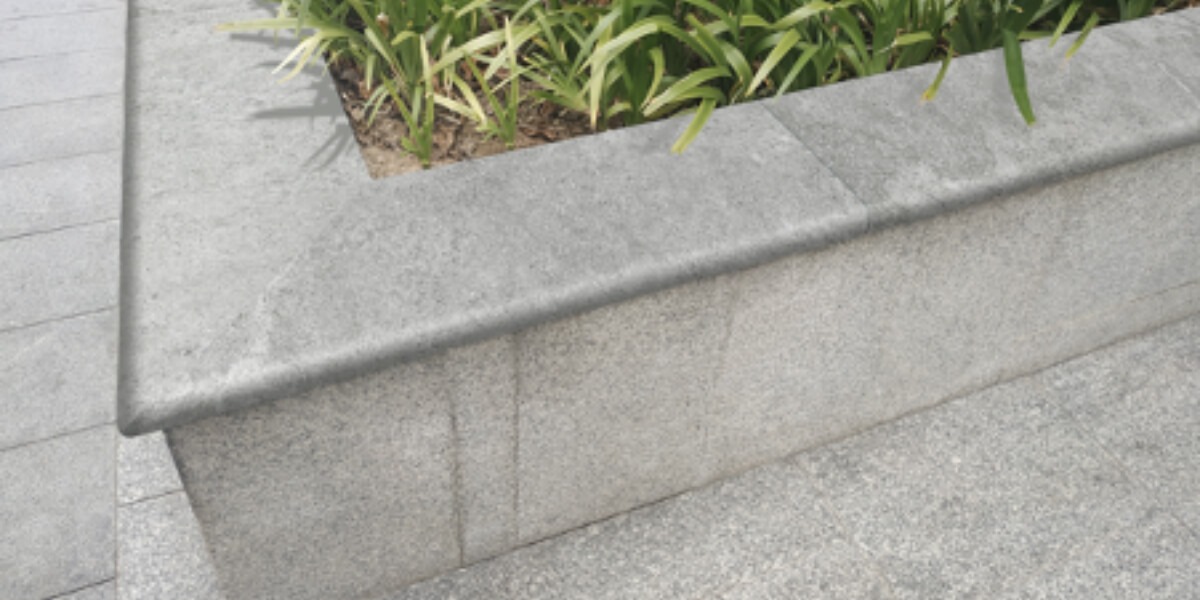
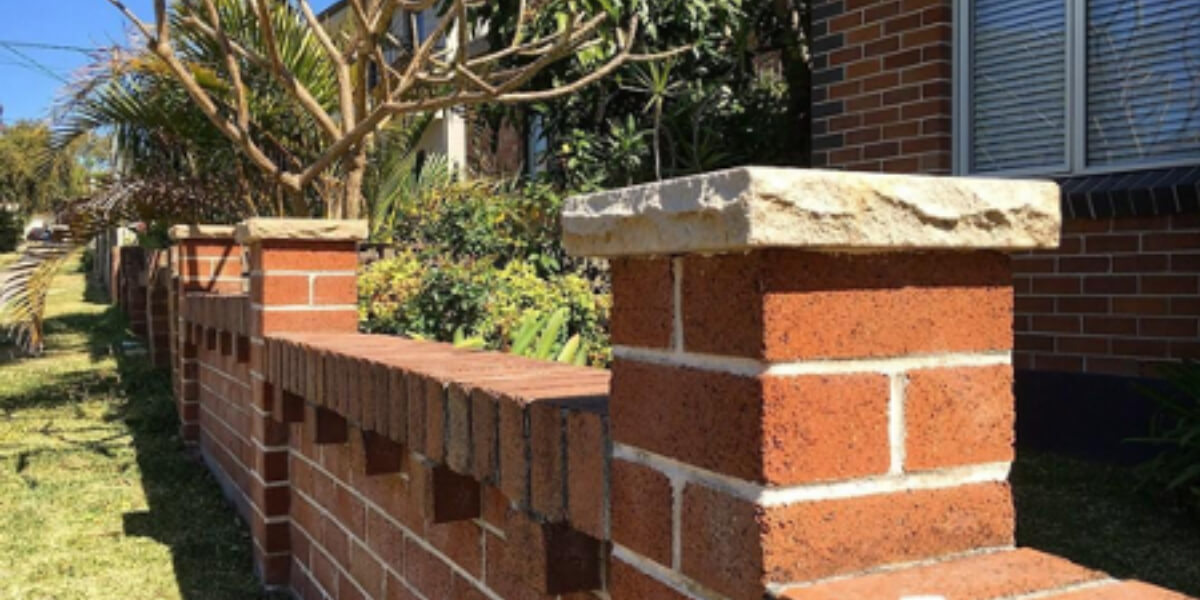
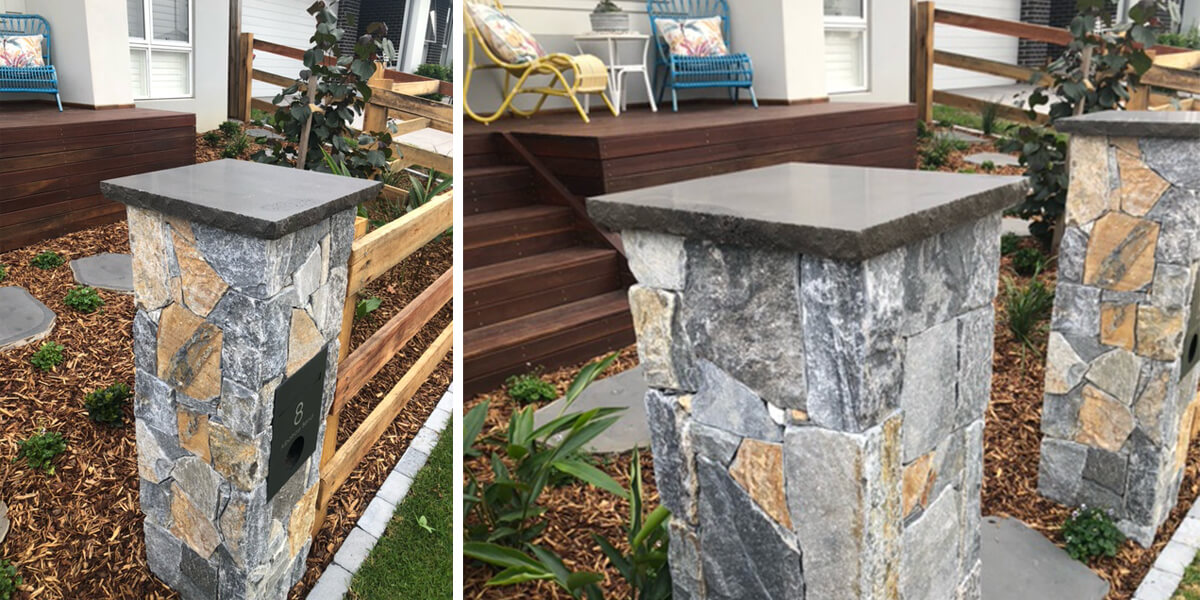
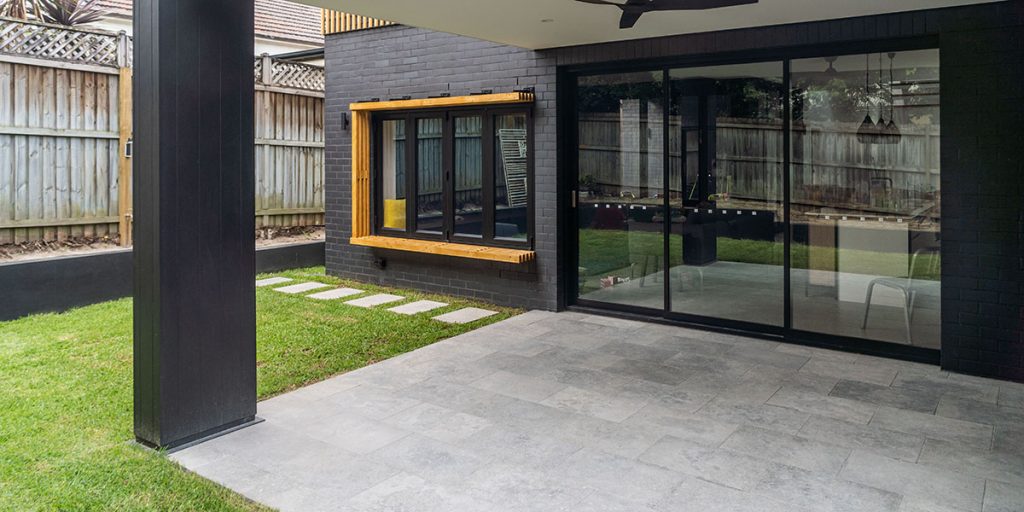
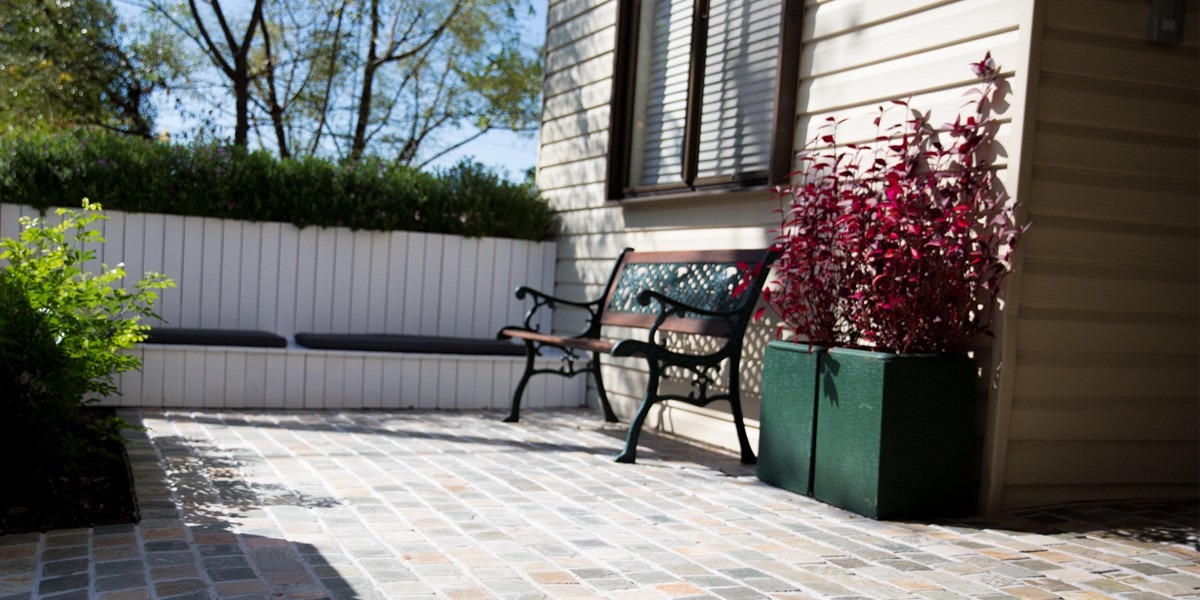
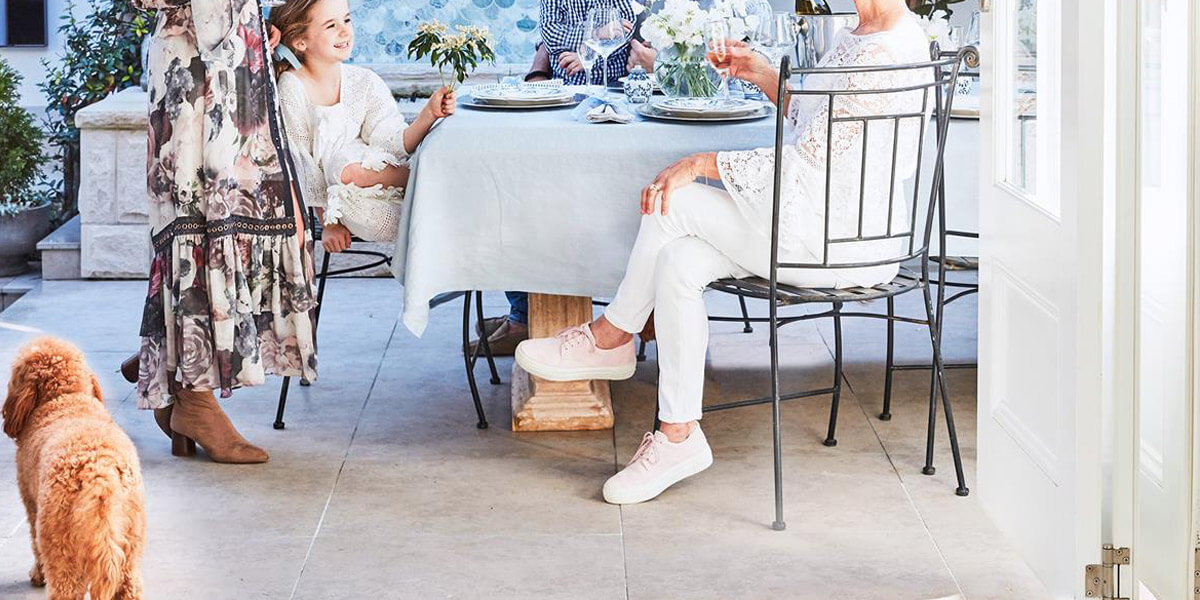 Stunning
Stunning 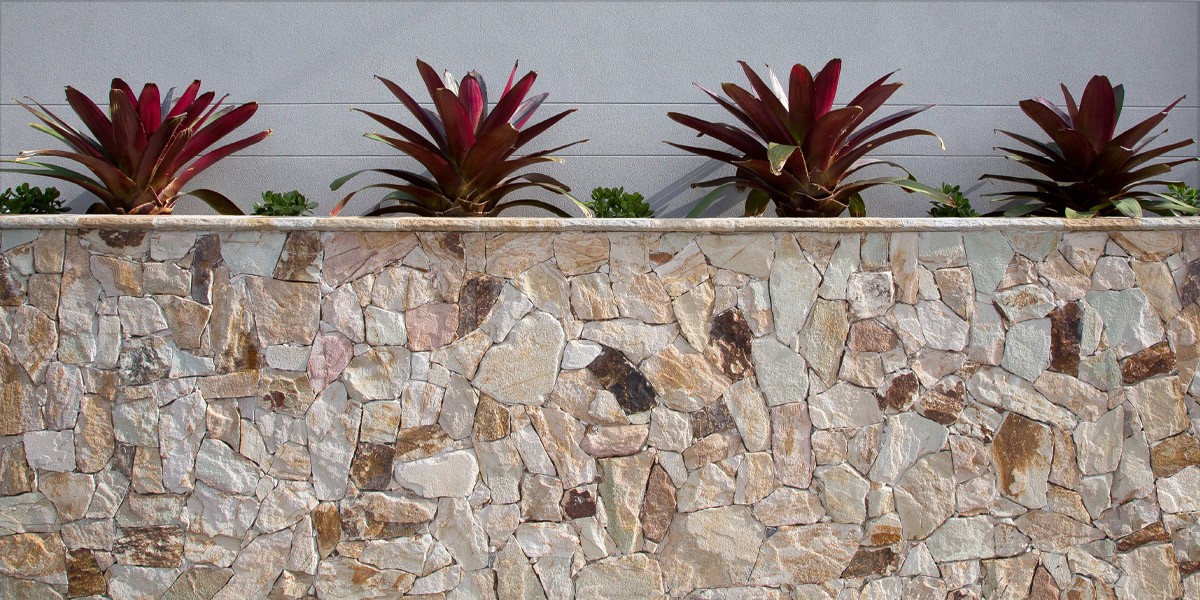

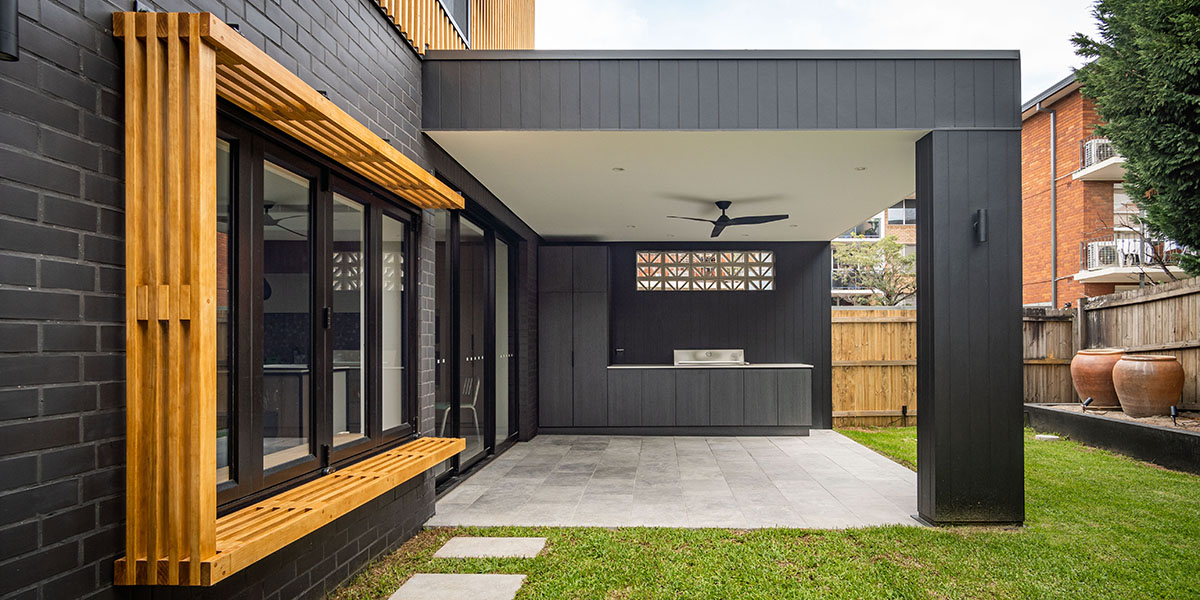
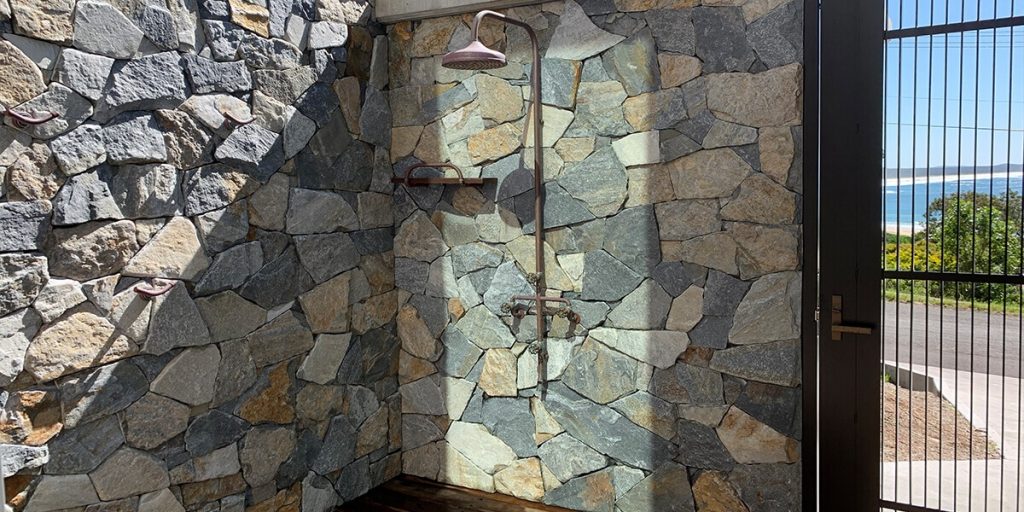
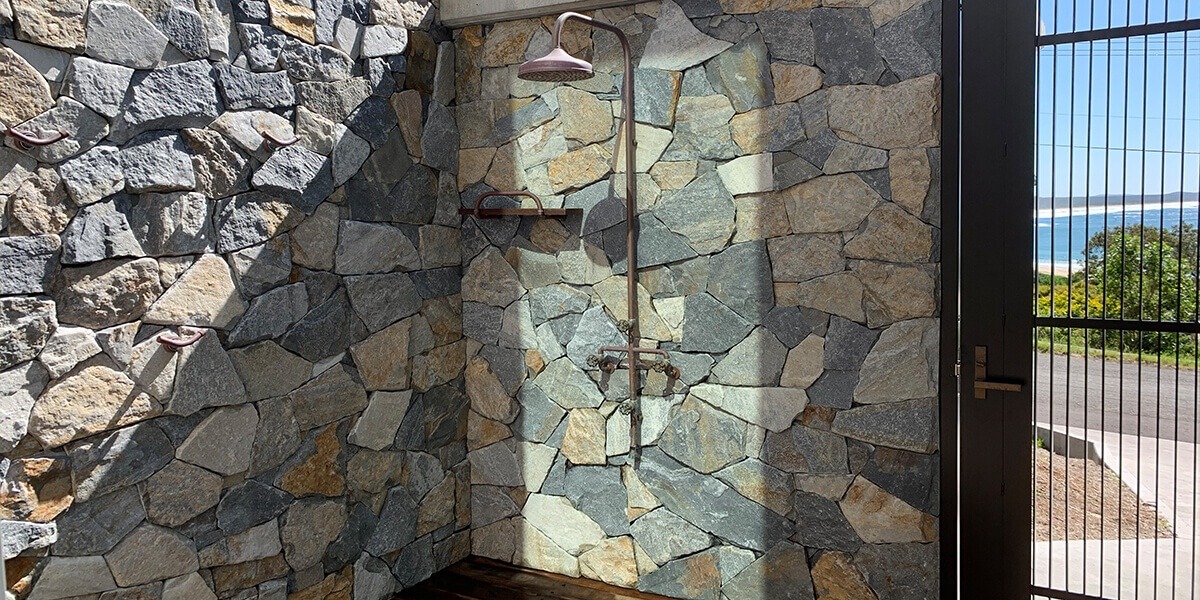 *
*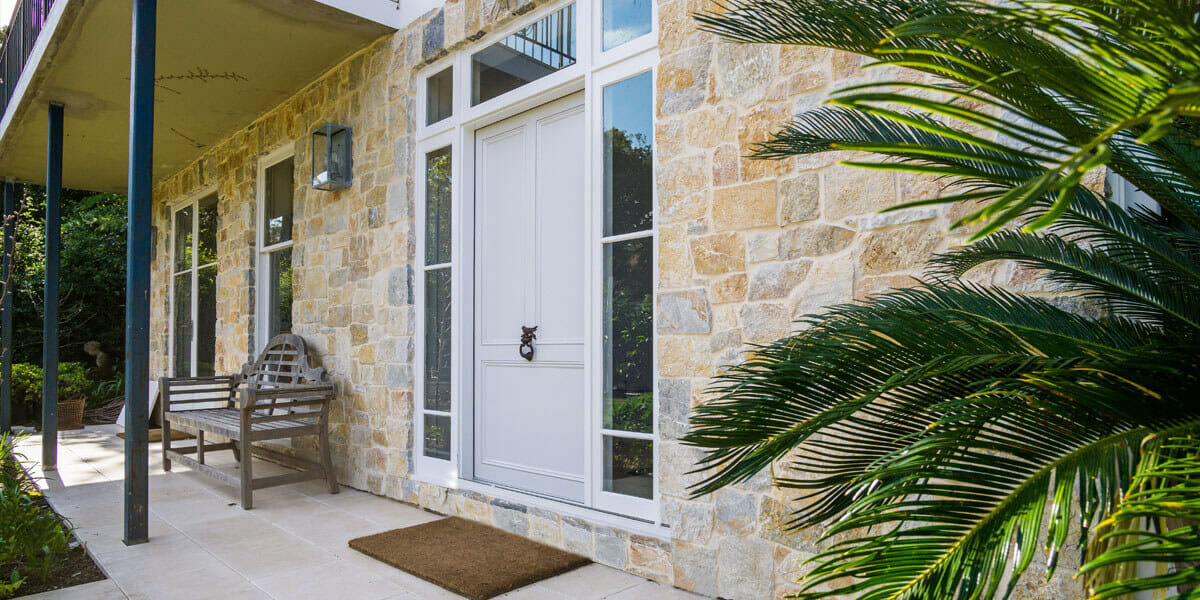 *
*